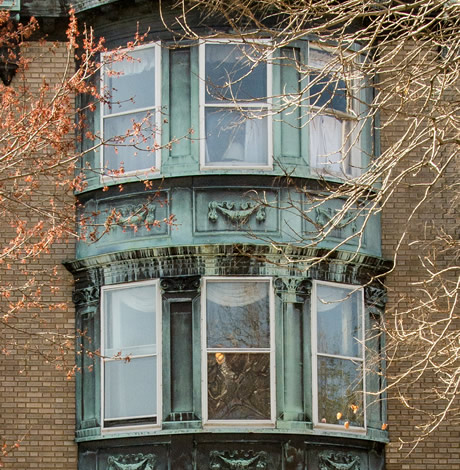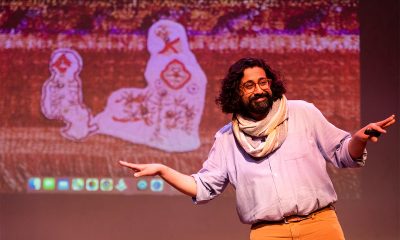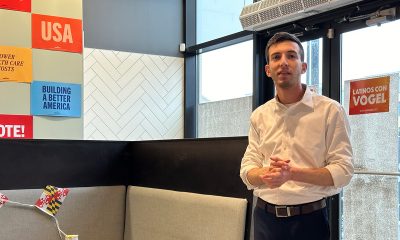Arts & Entertainment
A walk through Hill history
55th Capitol Hill House and Garden Tour nears
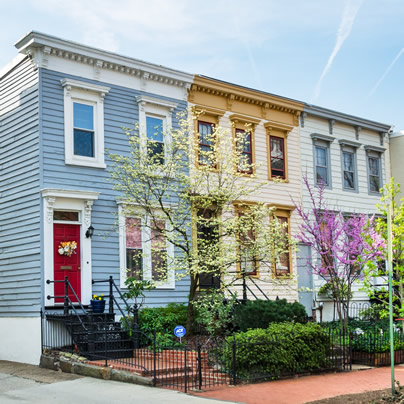
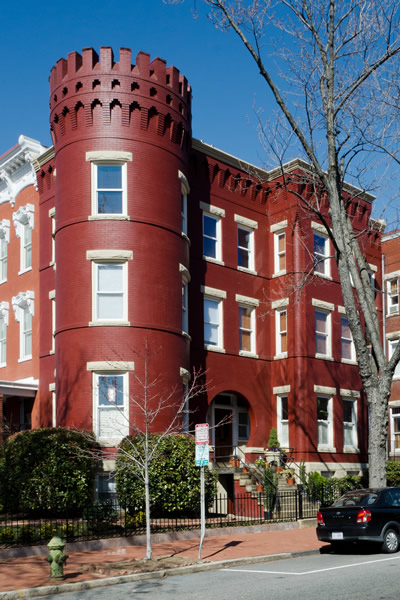
A house on 6th Street NE in Washington set to be on this year's Capital Hill House and Garden Tour. (Submitted photo)
By ROBERTA GUTMAN
Special to the Blade
Capitol Hill residents are surely among the most creative and aesthetically wired residents of the District. Once again the public can see just how this creativity is expressed in at least a dozen homes on this year’s Capitol Hill House and Garden Tour.
The tour is organized as a walkable triangle (no jitney service this year), all in North East, bounded by 3rd and 11th streets and Massachusetts Avenue. Here is a sampling of the wonderful homes on the tour:
At 306 East Capitol, Unit #1 in the condo building shows how a great deal of charm can fit into a small space that combines colorful as well as soothing colors, antique carpets, art and a vintage kitchen transformed with a creative paint job.
The 1870 gray clapboard house at 317 A Street NE has only 1,700 square feet of space, but what beautiful space it is, reflecting the owners’ love of Japanese art and furnishings and other objects from their postings abroad.
The glass doors at the back of 514 Constitution Ave., built in 1884, lighten this colorful house, owned by an artist and his State Department employee wife, now retired. Paintings, wall hangings and African artifacts bedeck the walls of this two-story home, which also doubles as a B&B. Steps lead down to a beautiful garden bordered at the other end by a coach house-cum-studio.
A double treat awaits visitors to 9 and 11 East 9th St., two of four contiguous homes built in 1892 with Richardsonian sandstone facades. Only 15 feet wide, both homes nonetheless feel surprisingly open and spacious. Visitors will be intrigued by the different footprints of the first floors of both homes and their long, beautiful, but very different back gardens.
Prepare to be bowled over by the space, furnishings and gorgeous colors in the four-story, exquisitely restored home at 905 Massachusetts Ave. Built in 1909, the house has a double parlor, formal dining room, a wonderful modern kitchen, huge bedrooms and study on the second and third floors and a full basement. The home’s furnishings combine modern and antique family furnishings and a superb art collection, plus a must-see wall clock.
The Italianate Renaissance Revival home at 7th and A Streets is, quite simply, exquisite both inside and out. A diminutive but sweeping staircase leads to the second floor and the master bedroom, which contains furniture once owned by Leslie “Gone with the Wind” Howard. A built-out mini balcony looks over the back patio, a “room” in itself with soothing bubbling fountains.
The large red brick condo building facing Lincoln Park on the east end contains a unit with its own entrance, at 1020 East Capitol St. You may have peered through the long windows and doors of this first-floor unit, which once housed a People’s Drugs; now’s your chance to see this beautiful, two-story unit overlooking the park from the inside. The two bedrooms in the English basement are remarkably light and spacious.
These are only half of the beautiful homes and gardens on the tour.
The event starts with a twilight tour 5-8 p.m. on May 12, and continues from 1-5 p.m. on Mother’s Day. Tickets can be purchased at the CHRS booth at Eastern Market on Saturdays and some Sundays beginning this weekend; online at chrs.org; or at businesses listed on the website. They cost $25 in advance or $30 on the tour weekend.
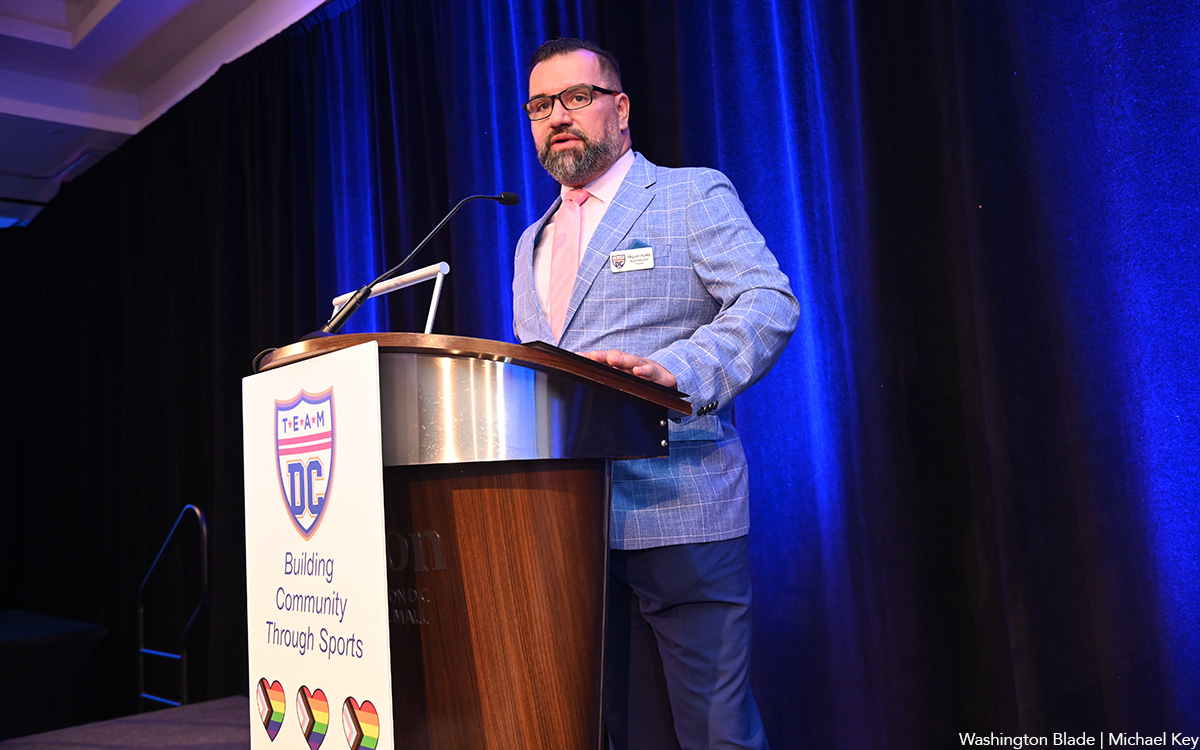
Team DC, the umbrella organization for LGBTQ-friendly sports teams and leagues in the D.C. area, held its annual Night of Champions Awards Gala on Saturday, April 20 at the Hilton National Mall. The organization gave out scholarships to area LGBTQ student athletes as well as awards to the Different Drummers, Kelly Laczko of Duplex Diner, Stacy Smith of the Edmund Burke School, Bryan Frank of Triout, JC Adams of DCG Basketball and the DC Gay Flag Football League.
(Washington Blade photos by Michael Key)
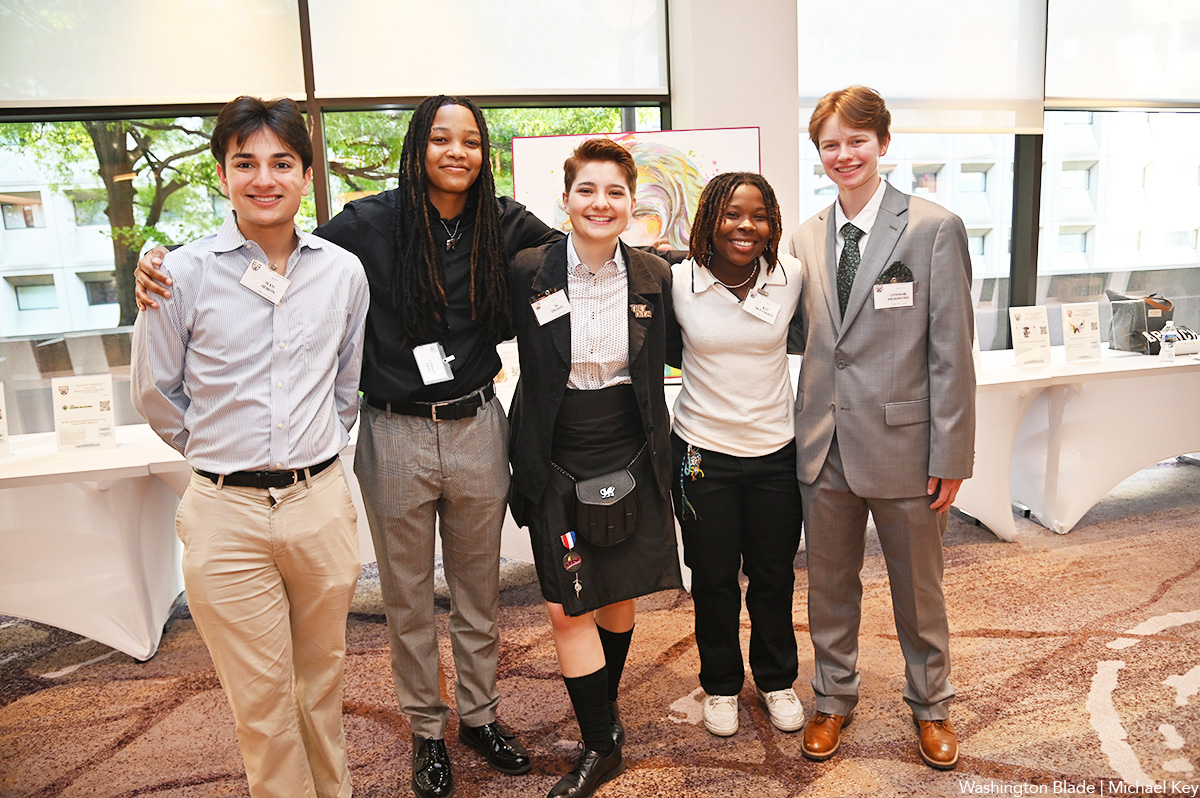
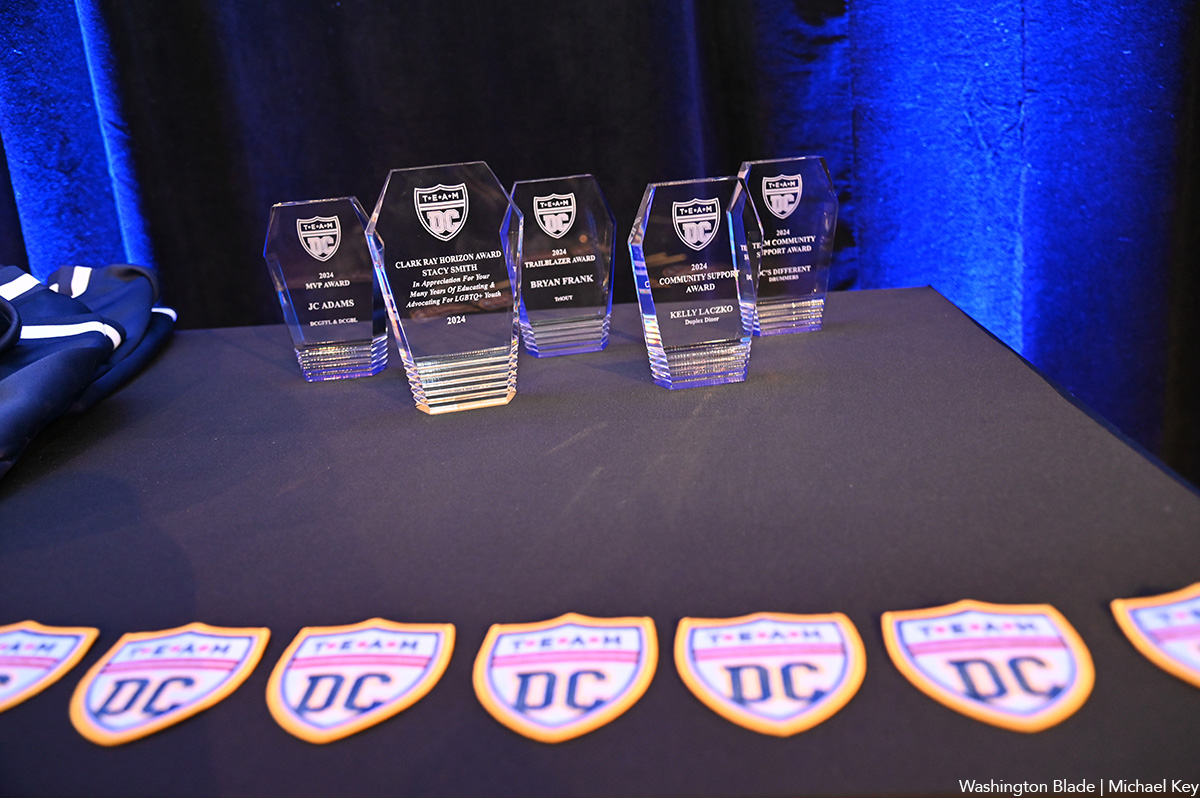
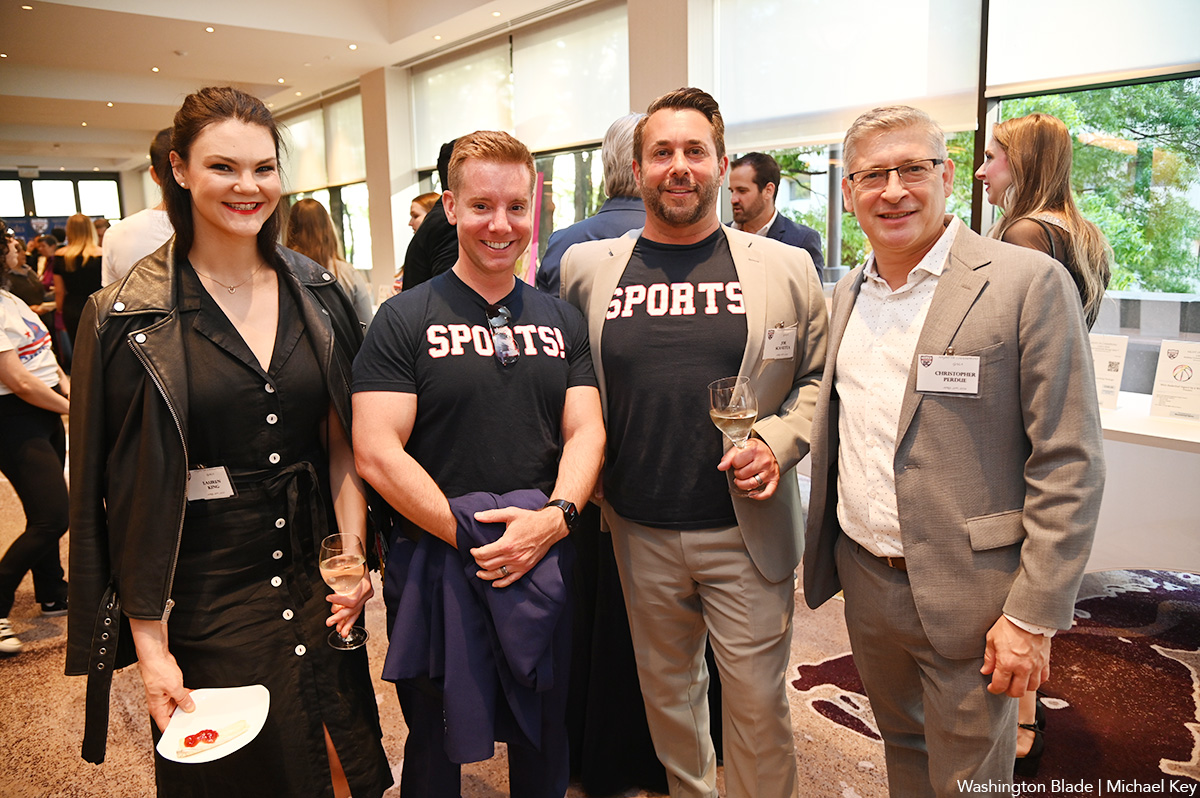
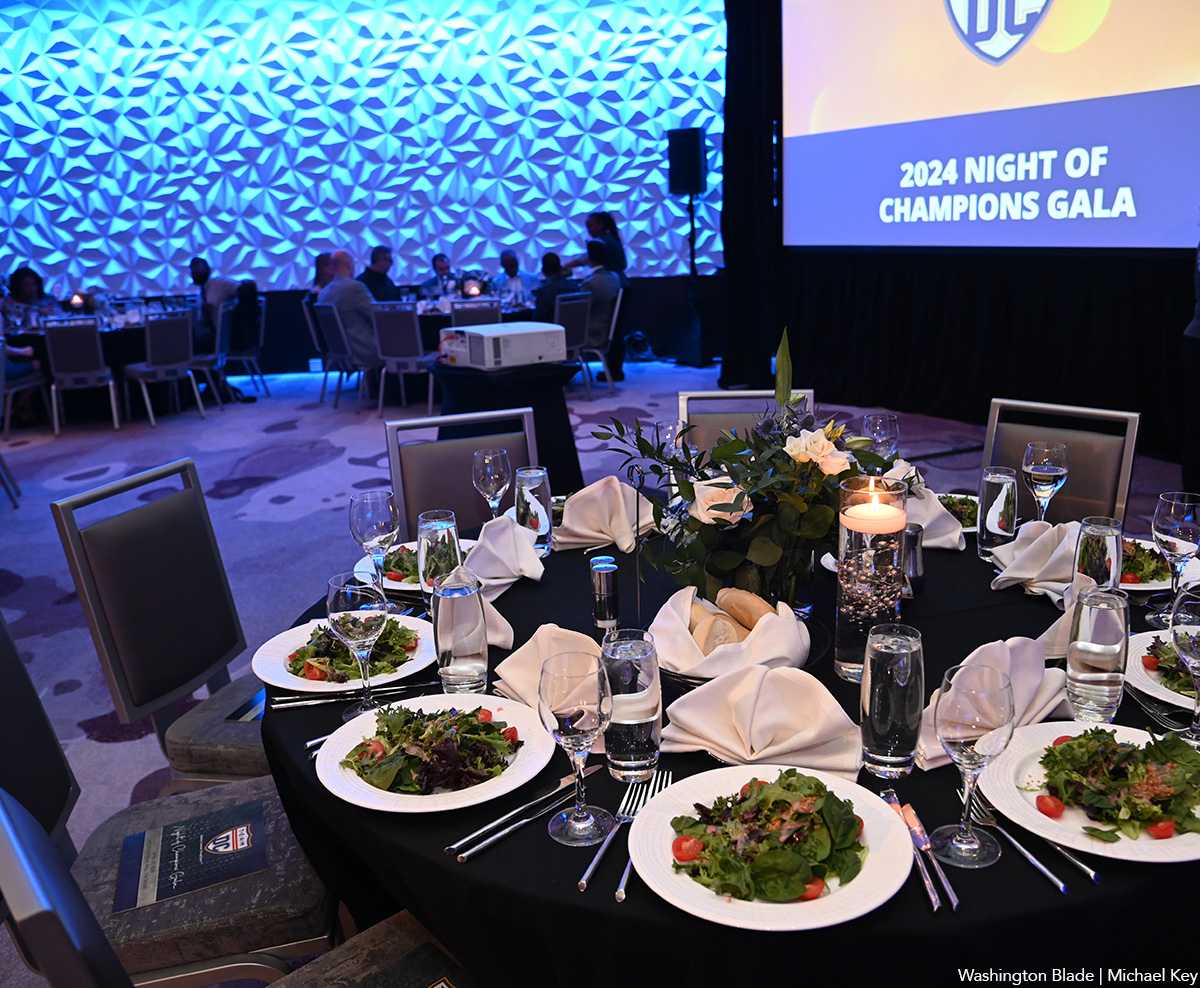
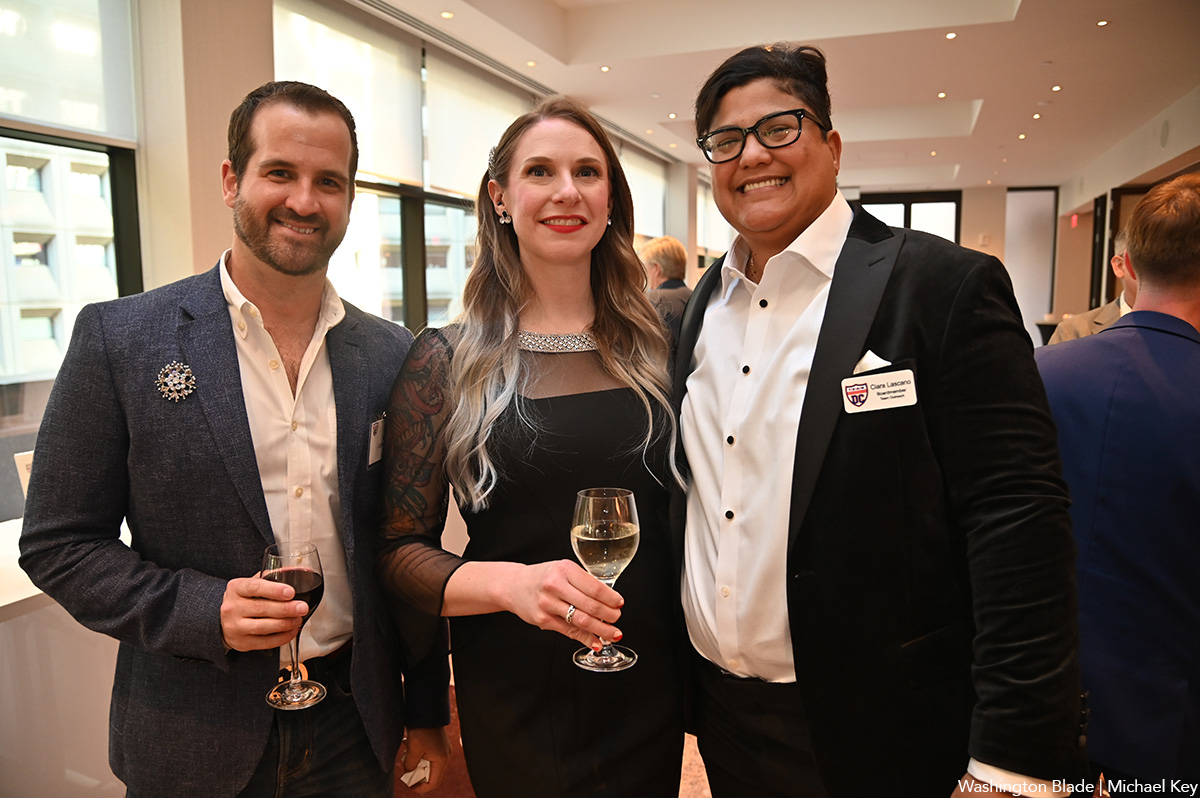
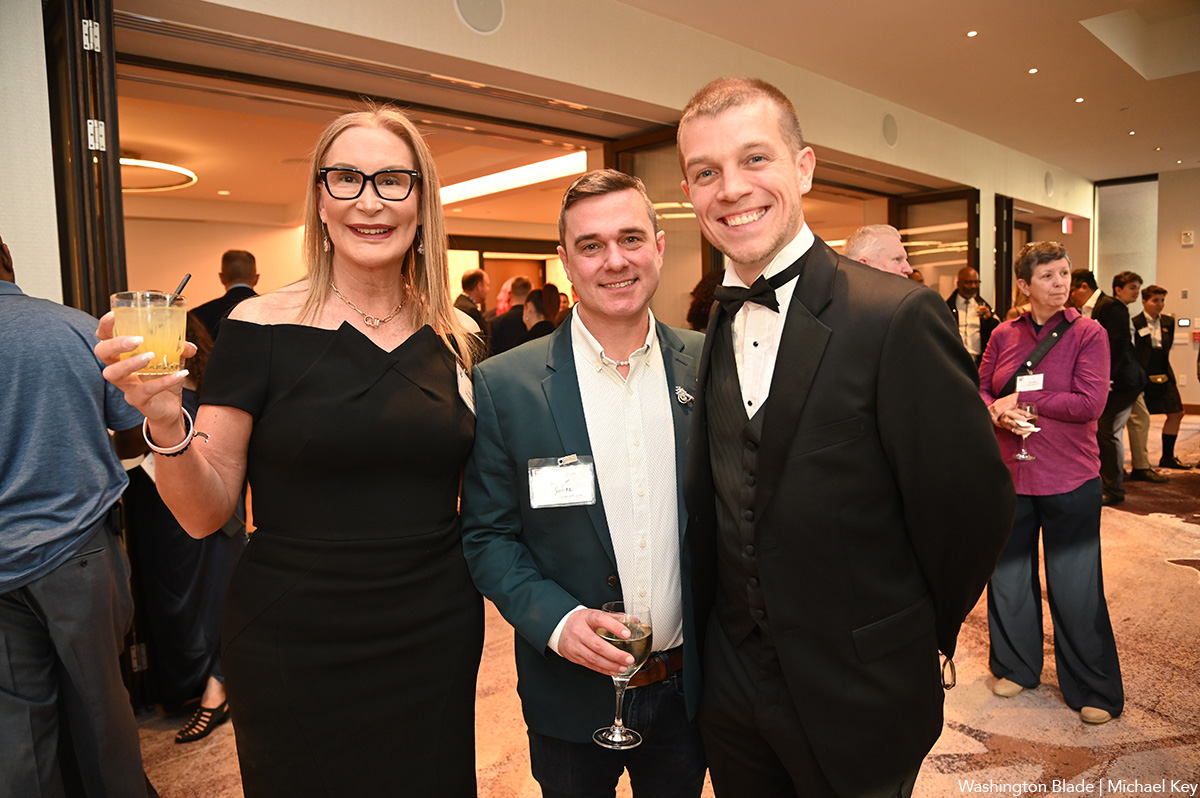
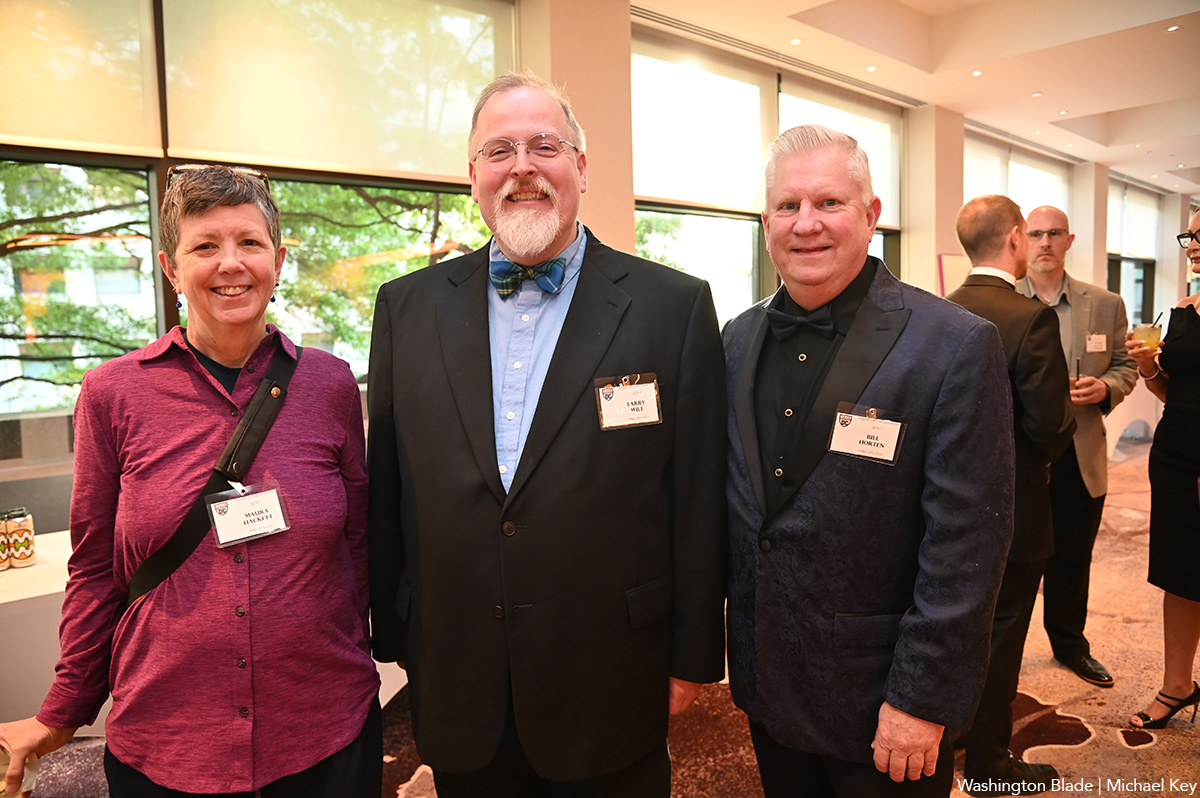
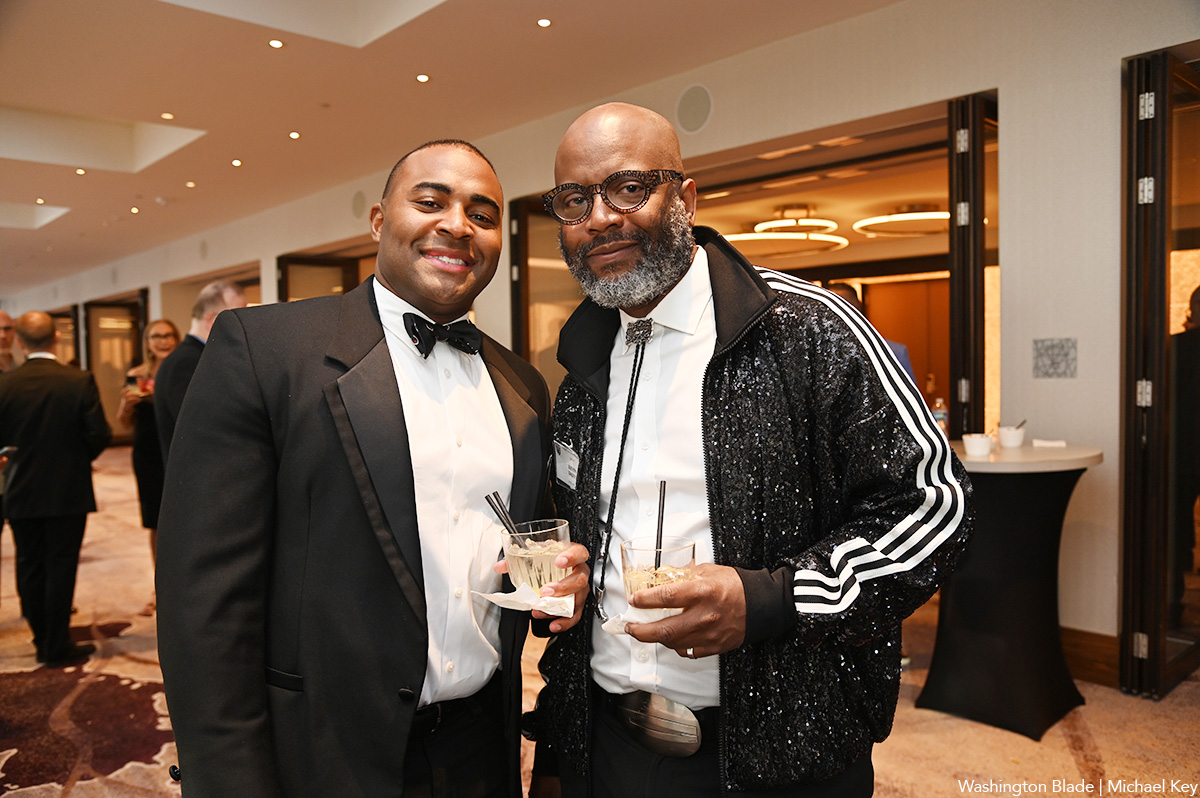
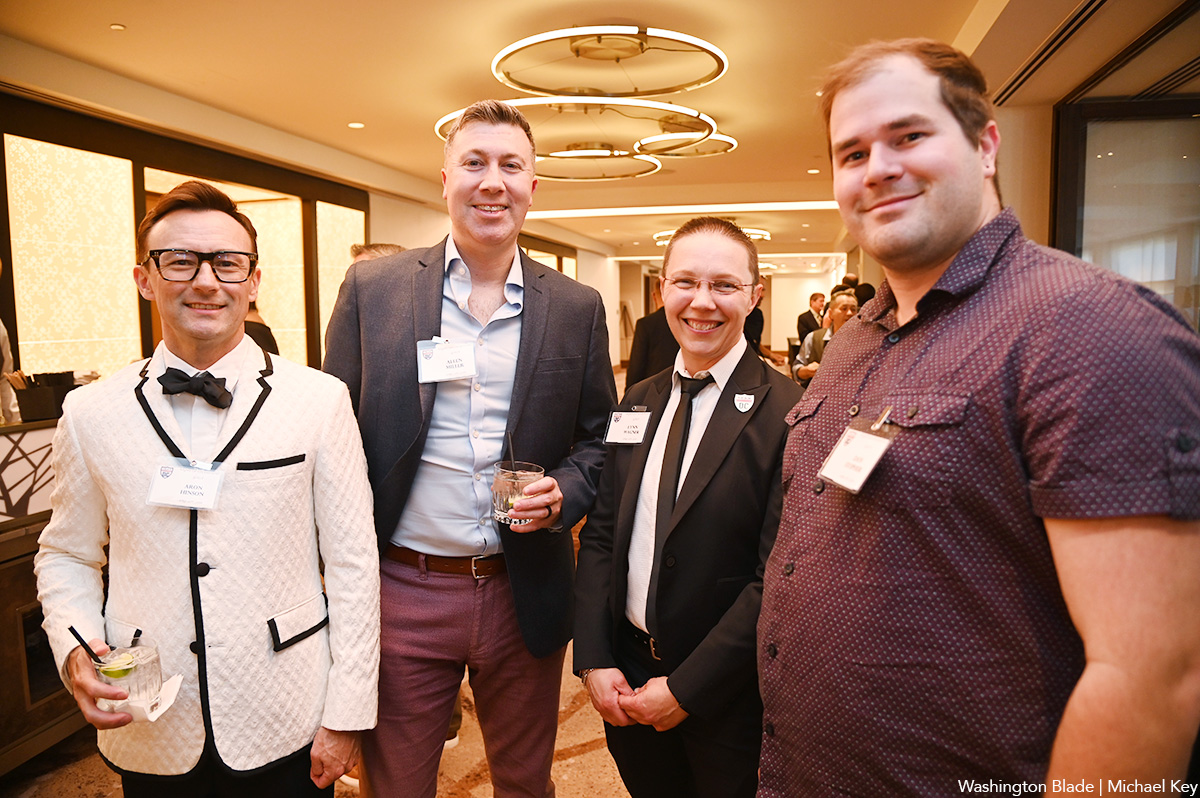
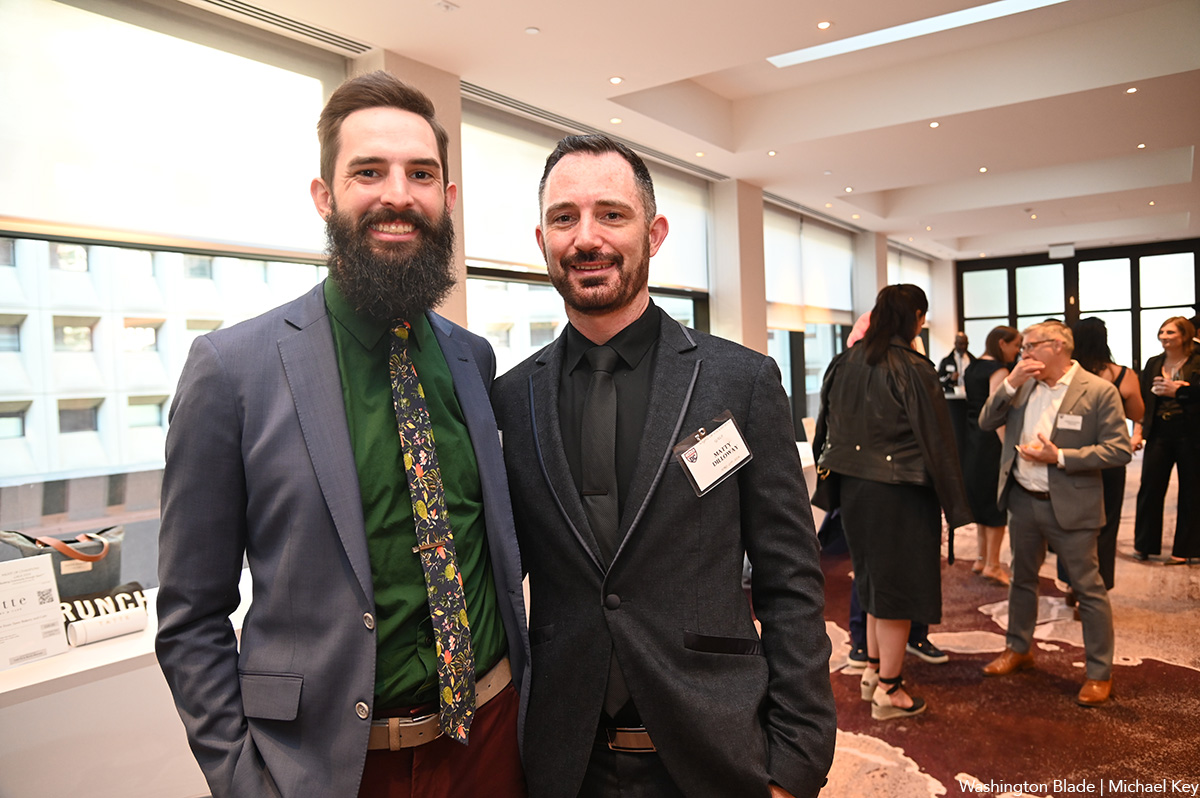
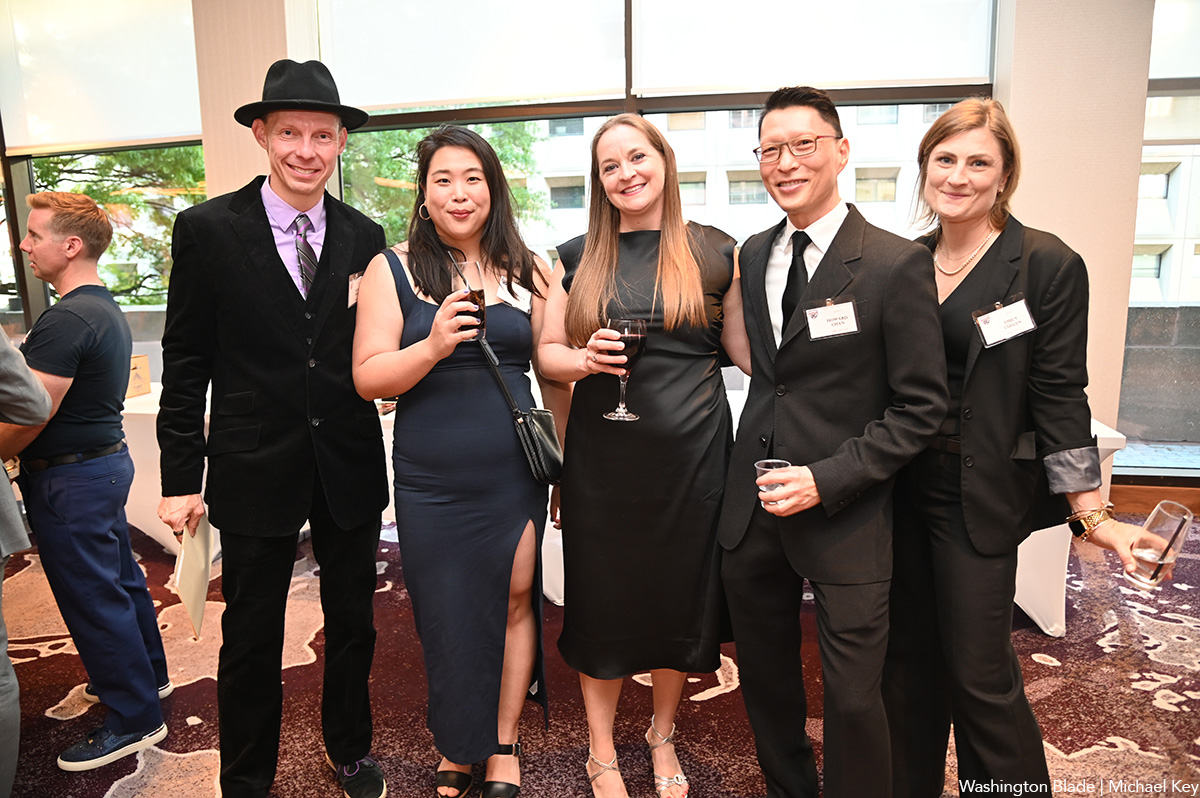
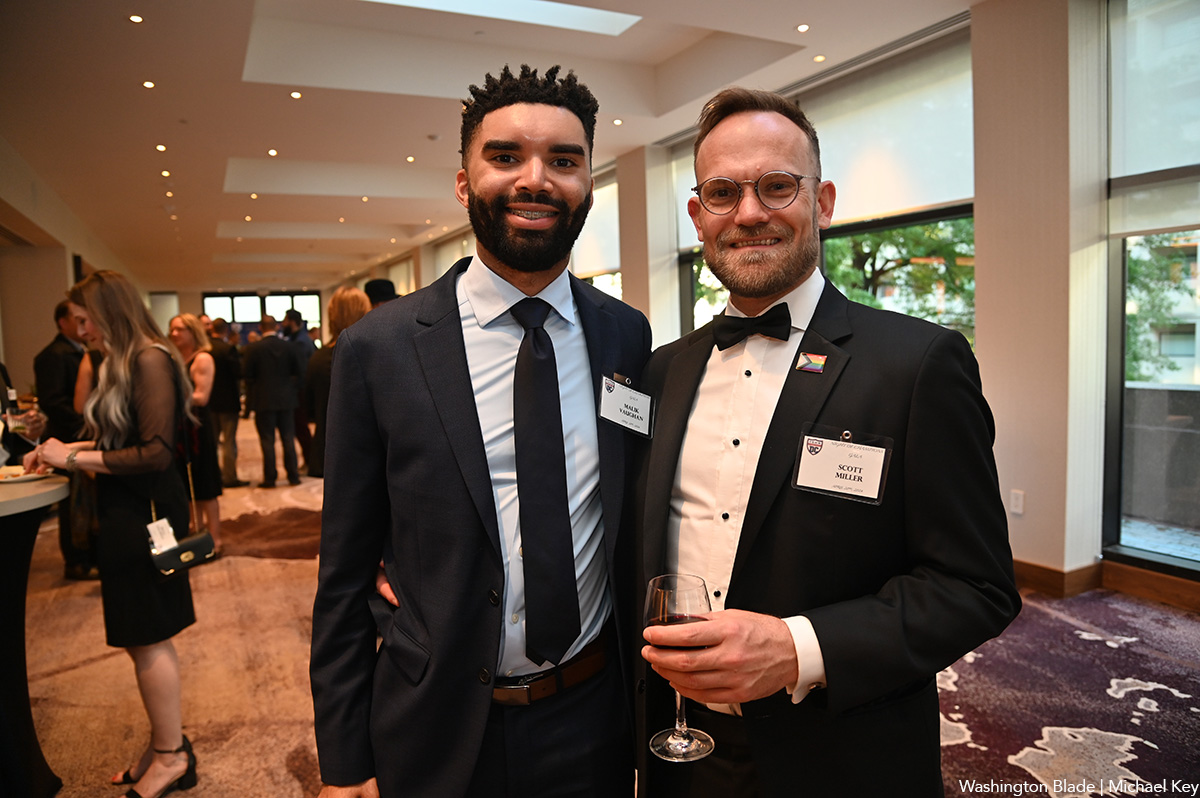
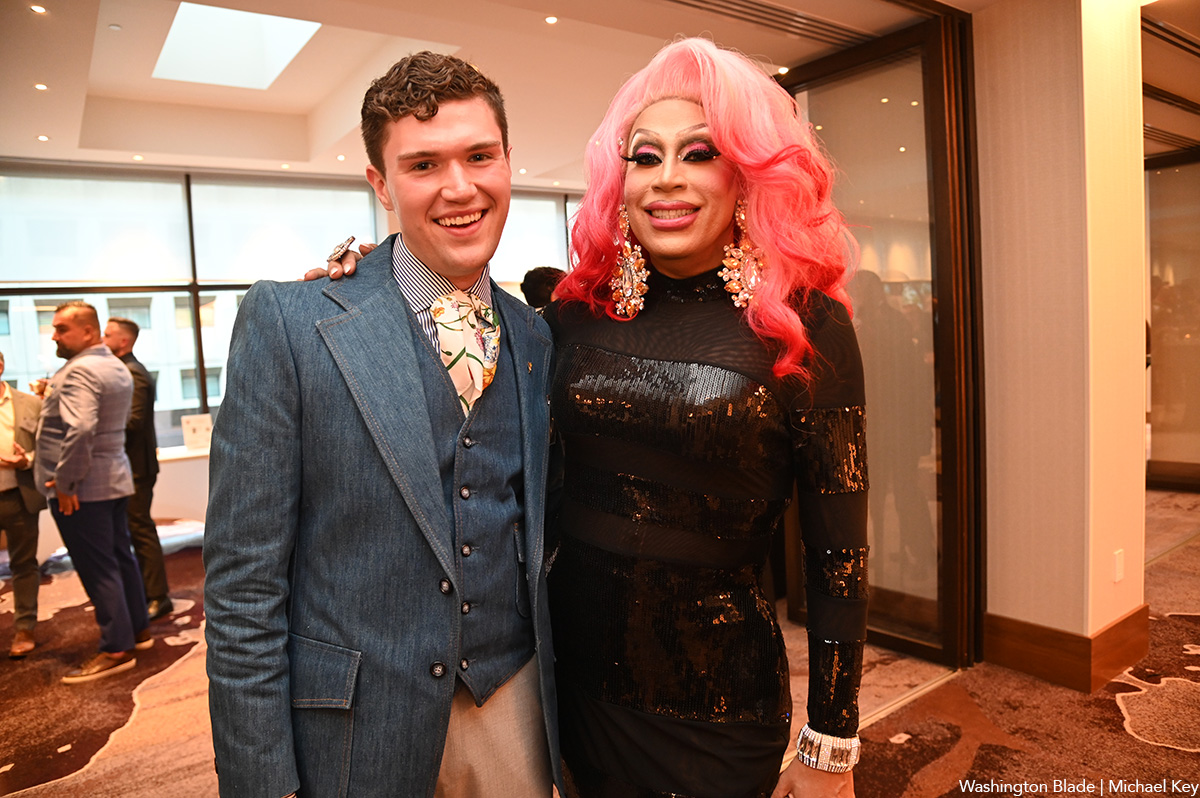
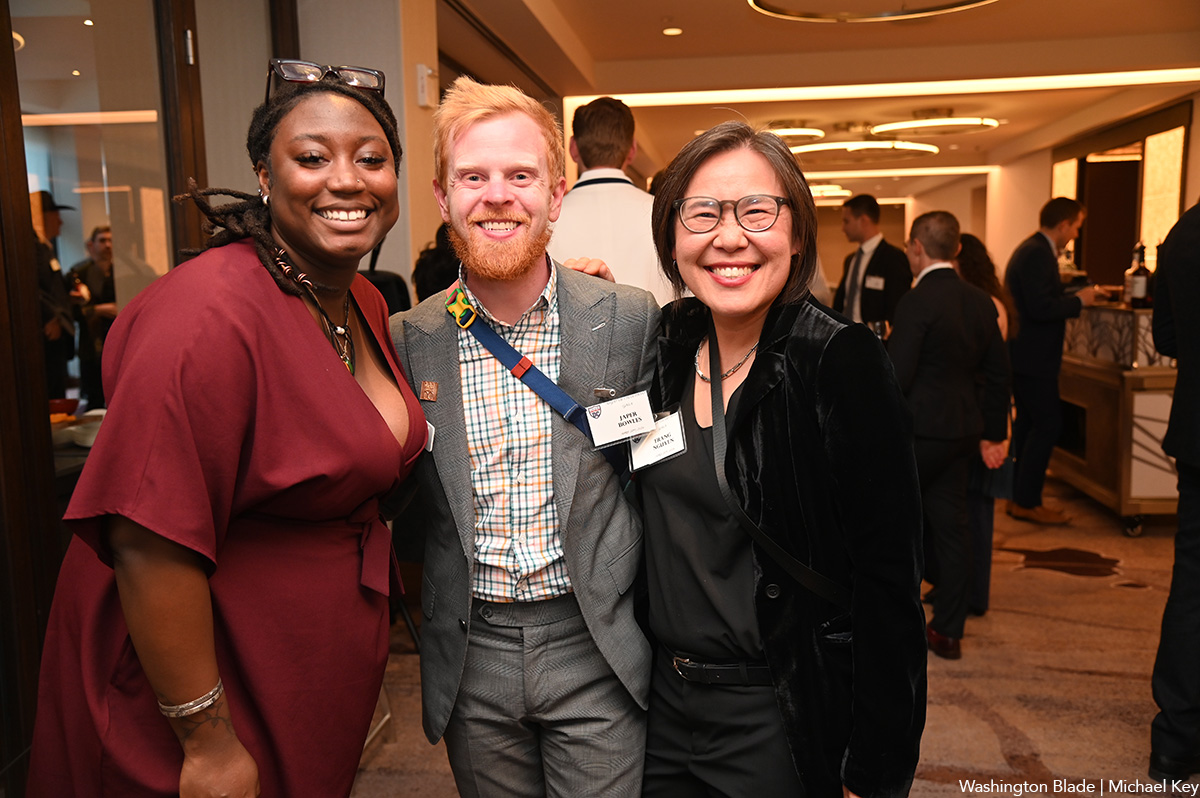
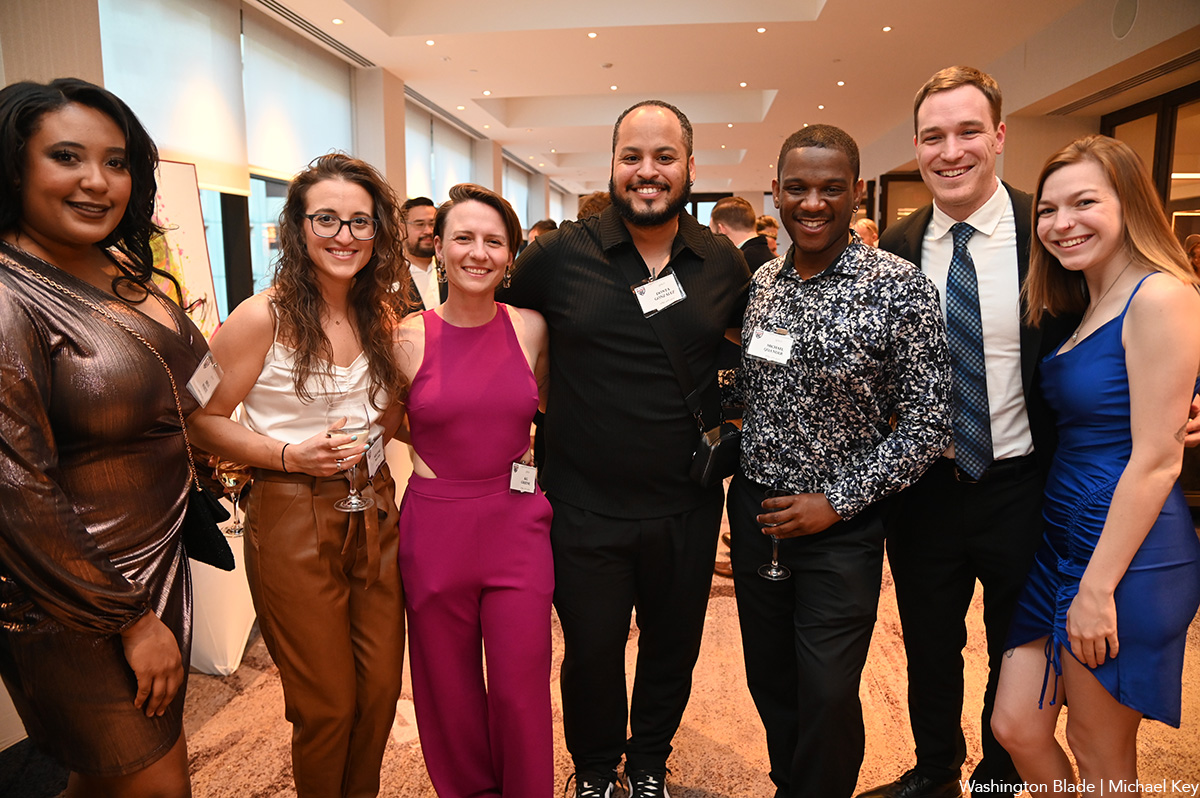
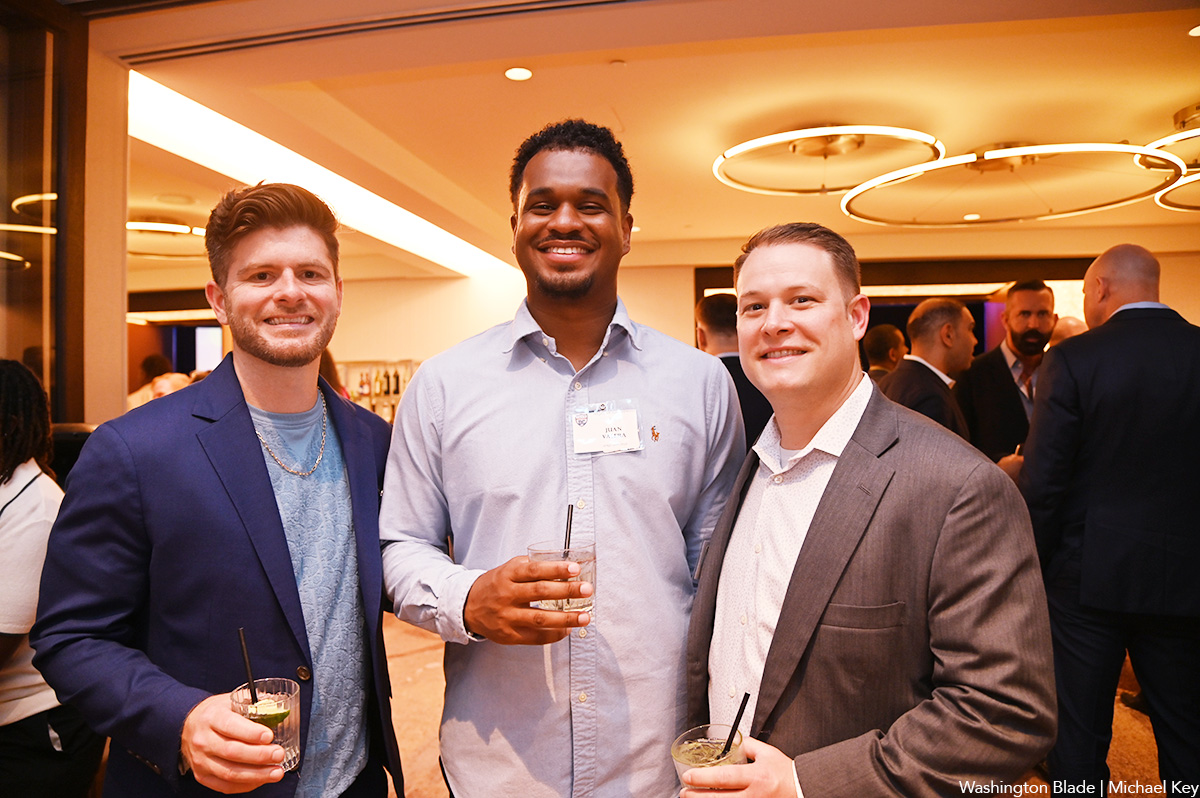
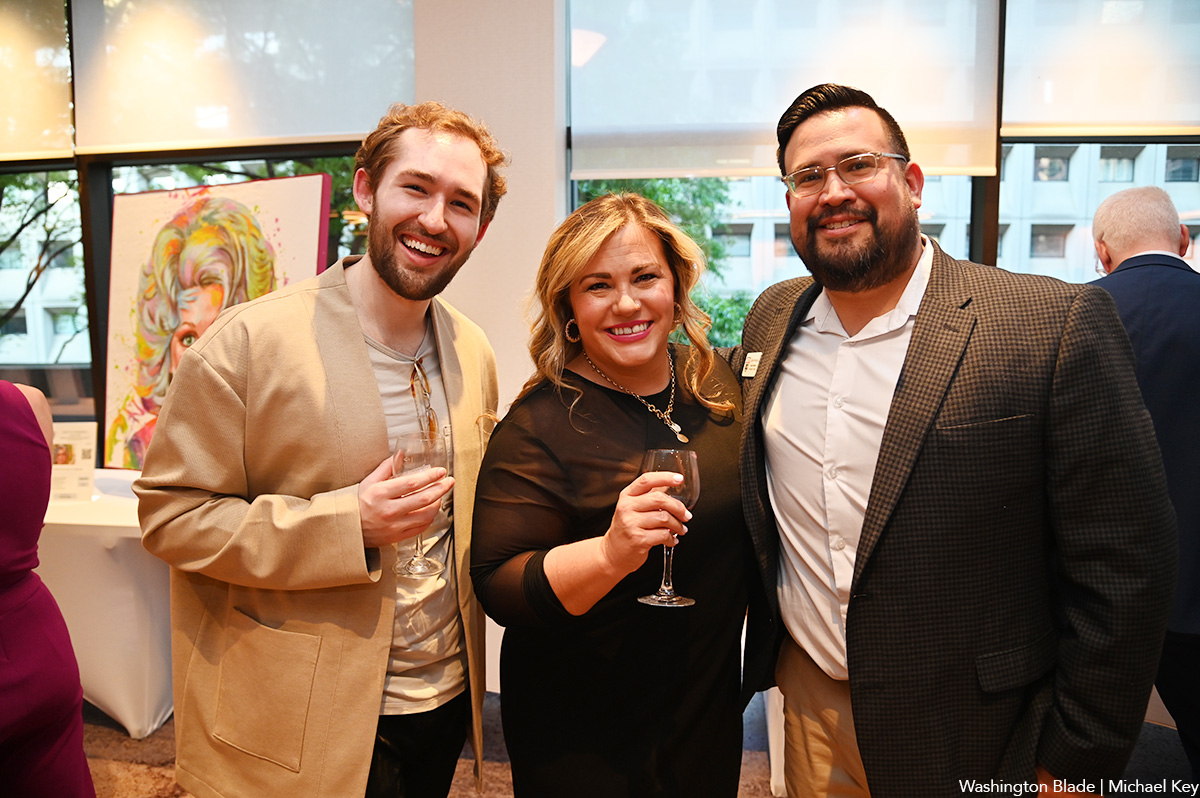
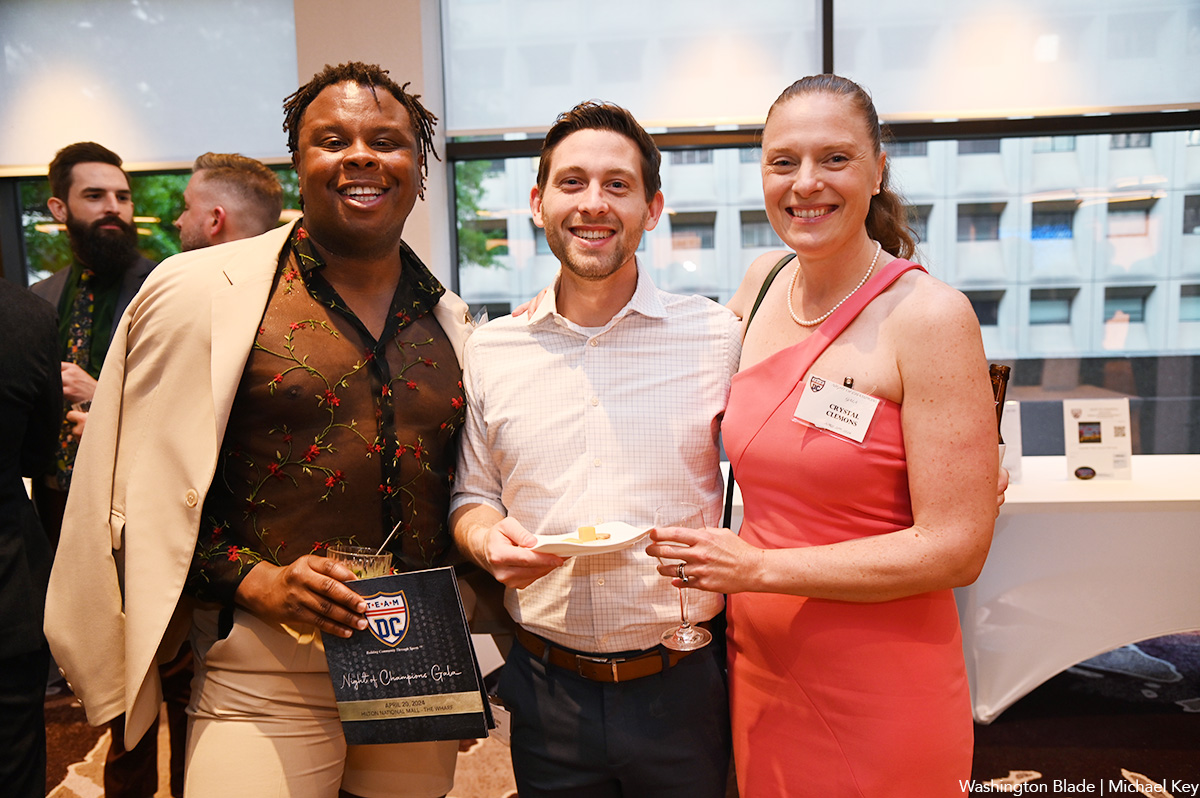
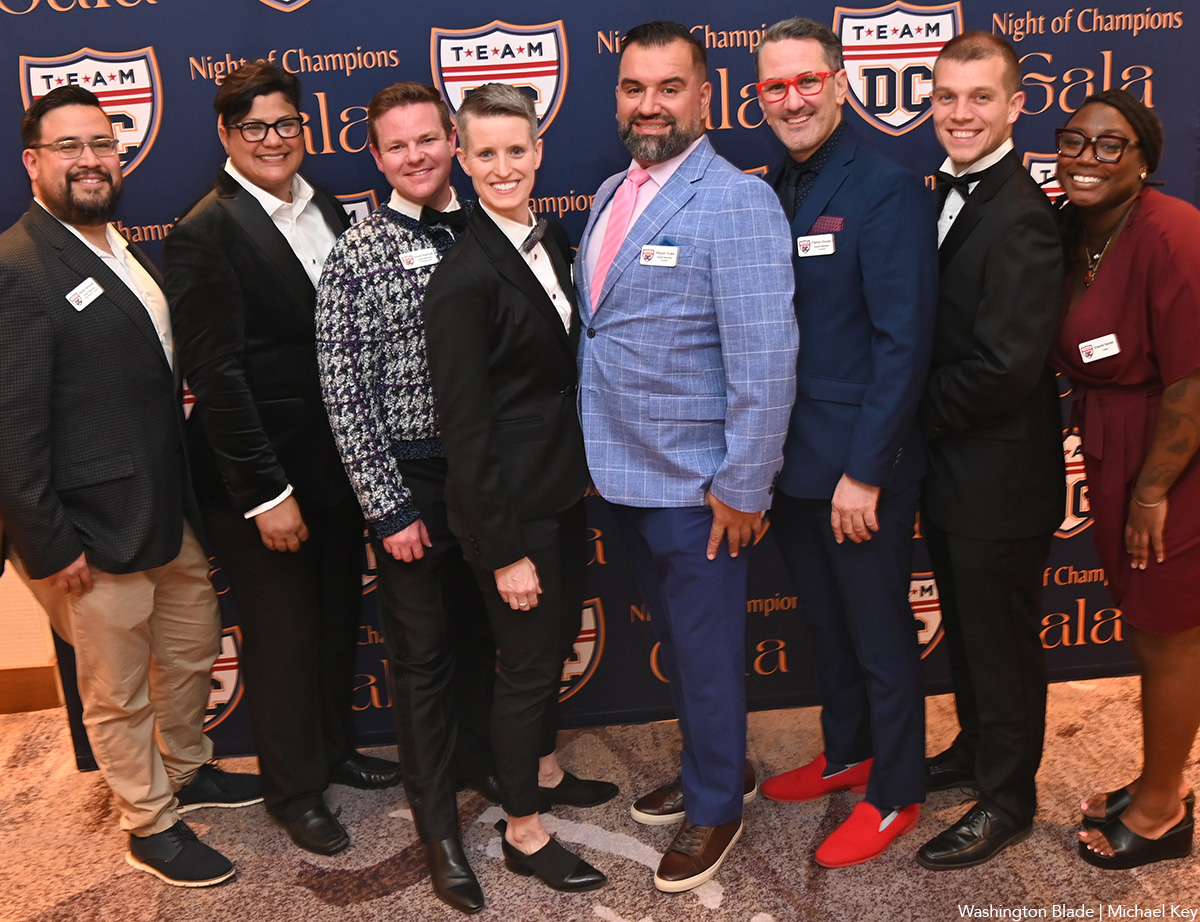
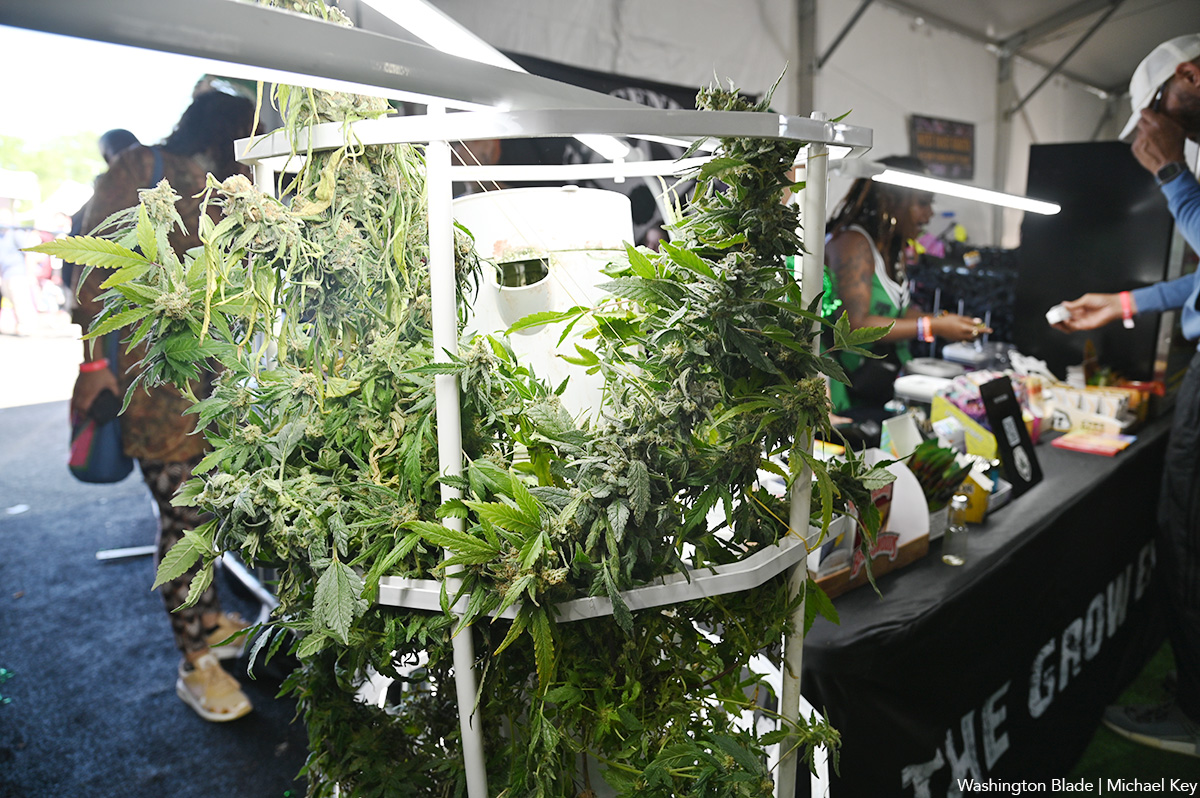
The 2024 National Cannabis Festival was held at the Fields at RFK Stadium on April 19-20.
(Washington Blade photos by Michael Key)
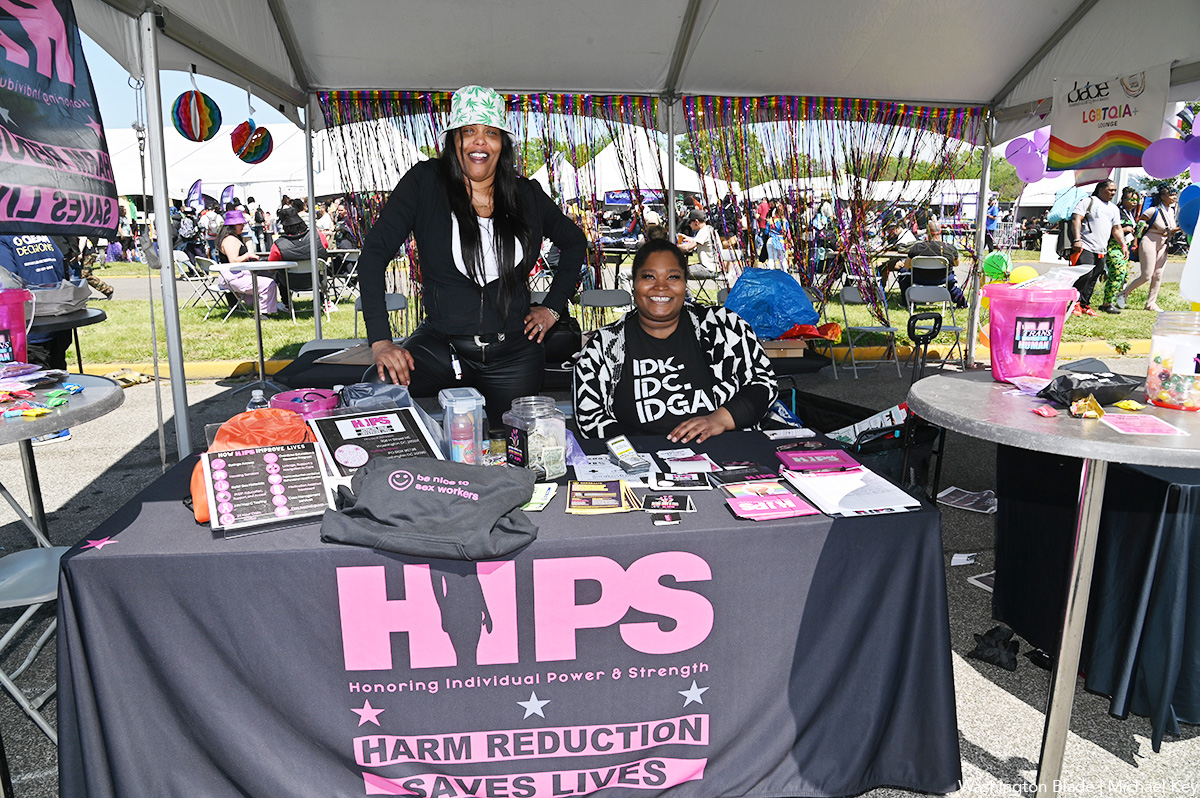

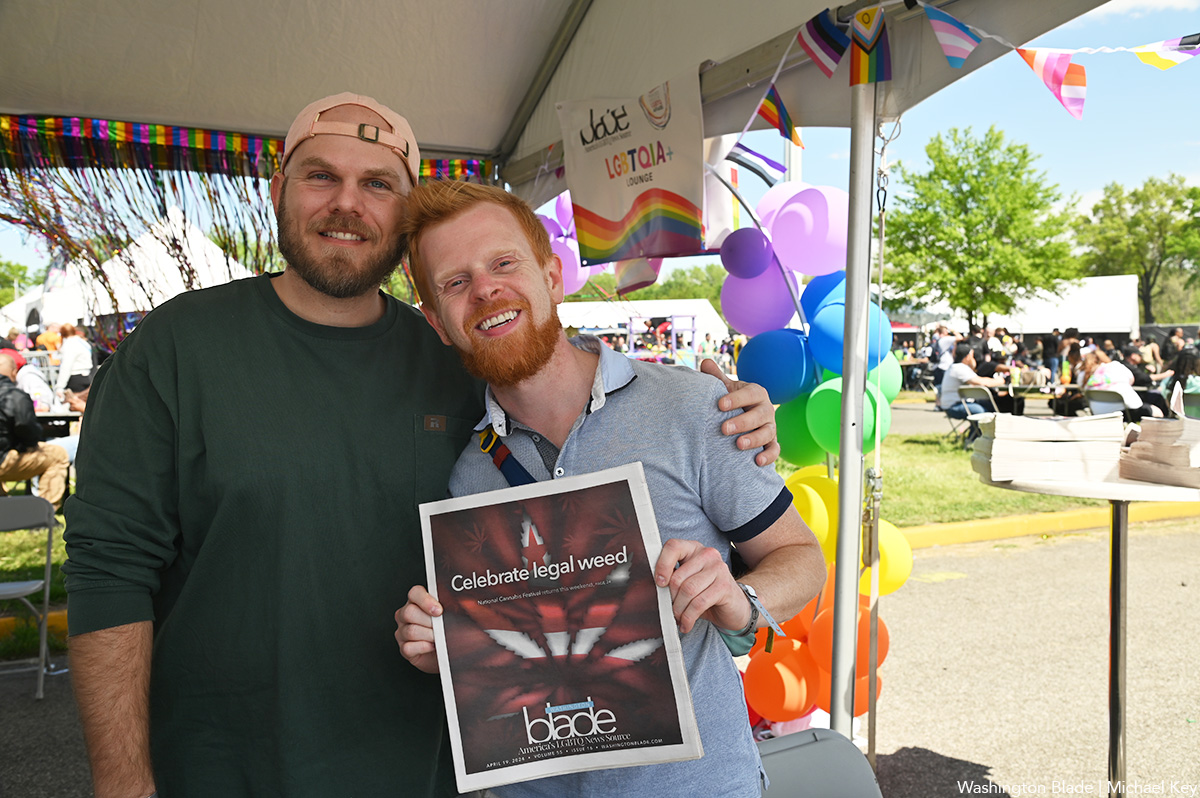
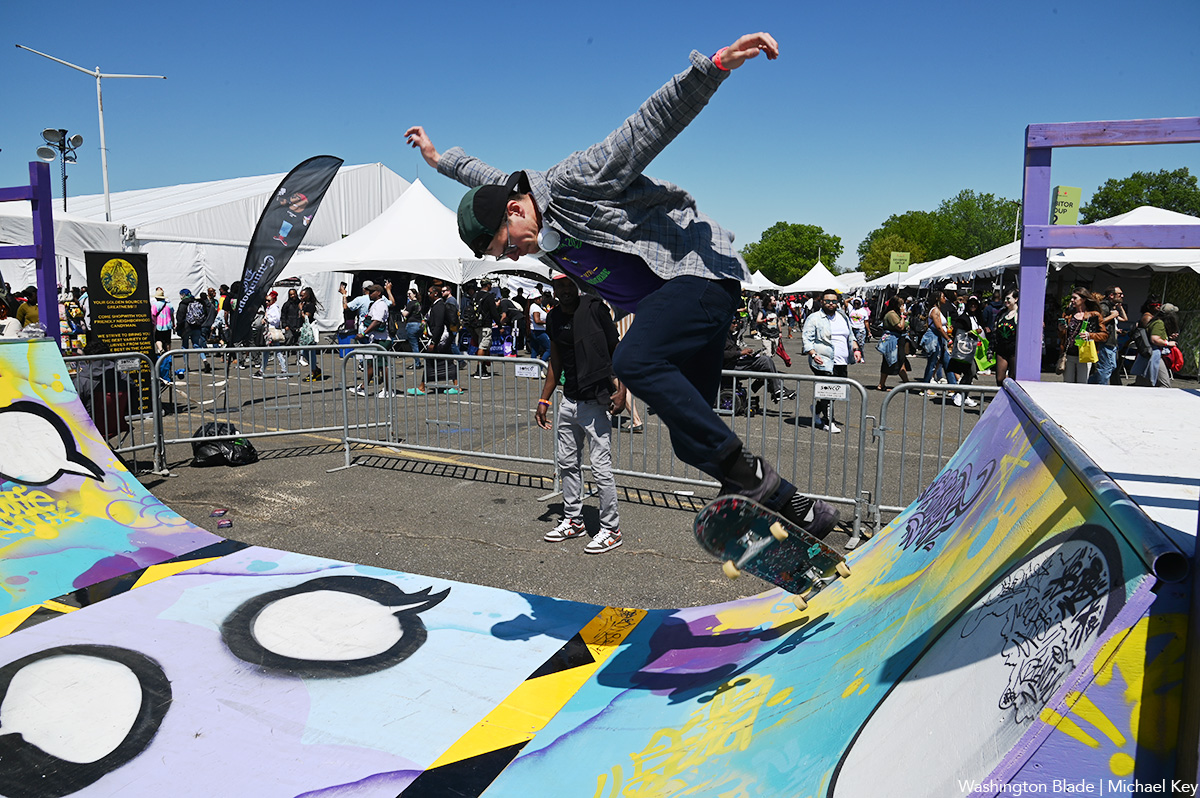
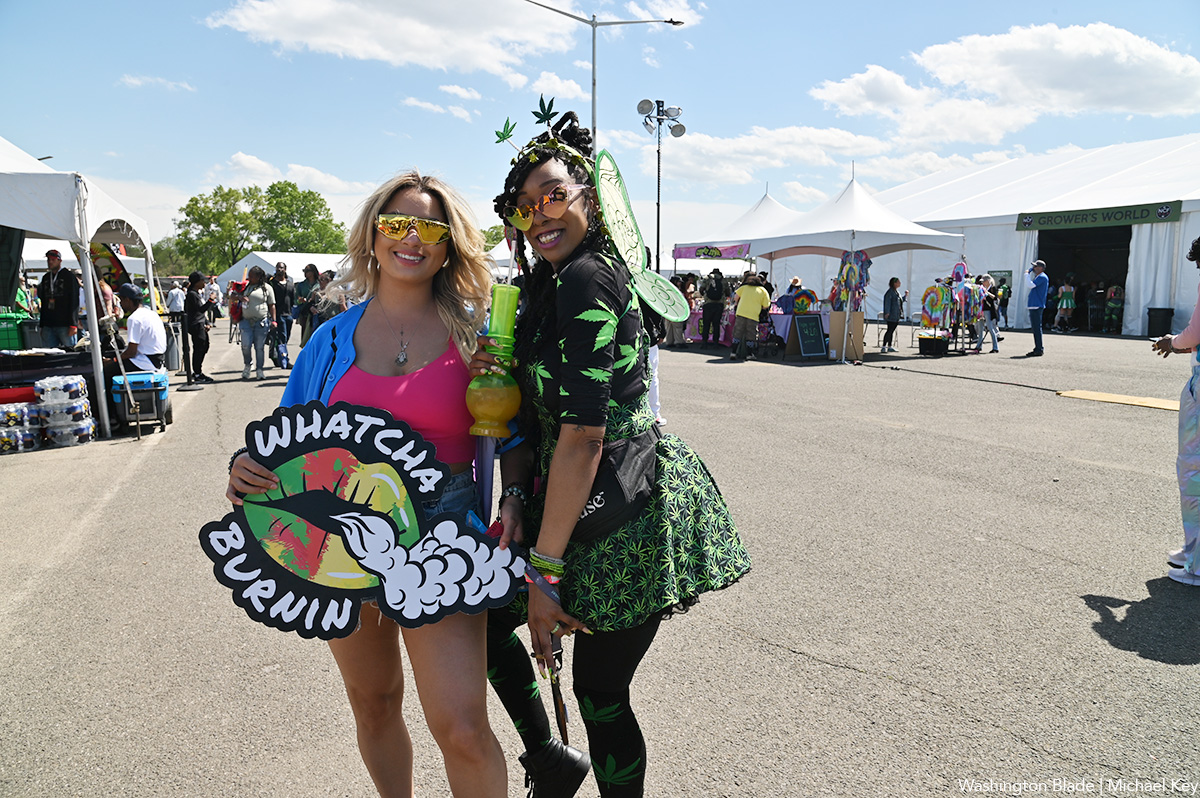

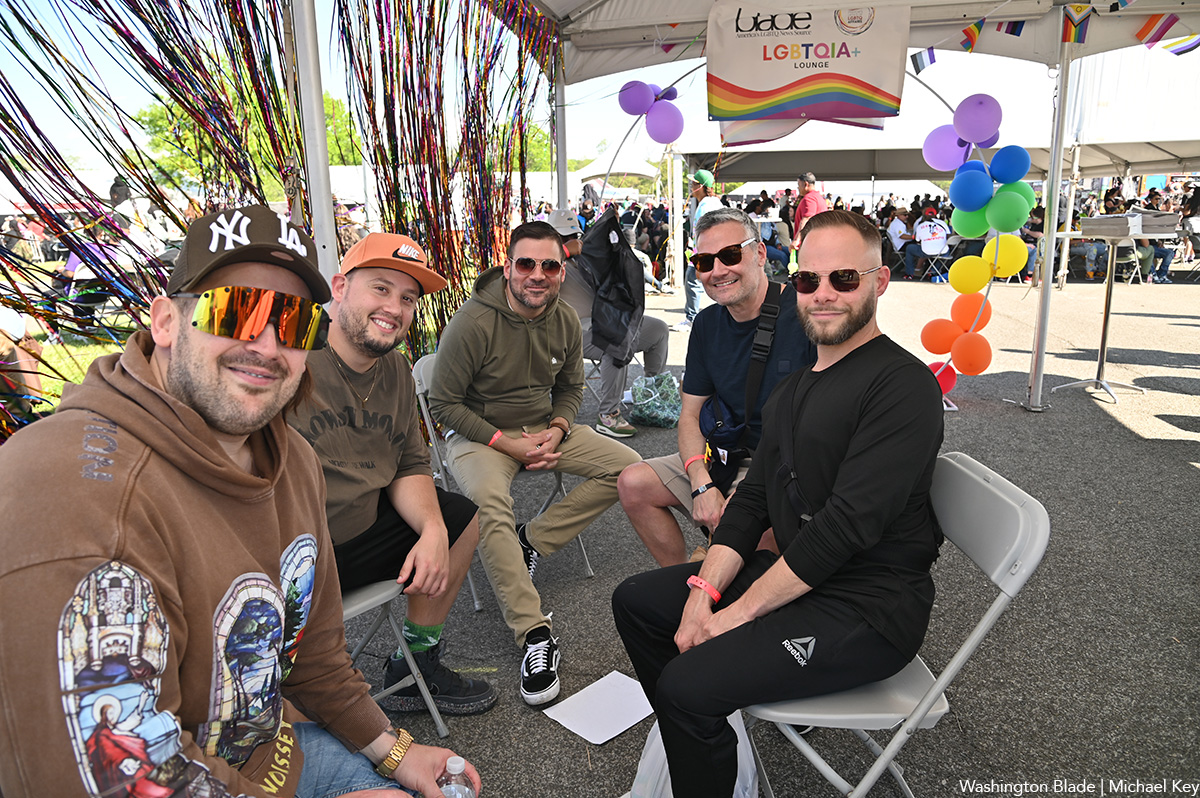
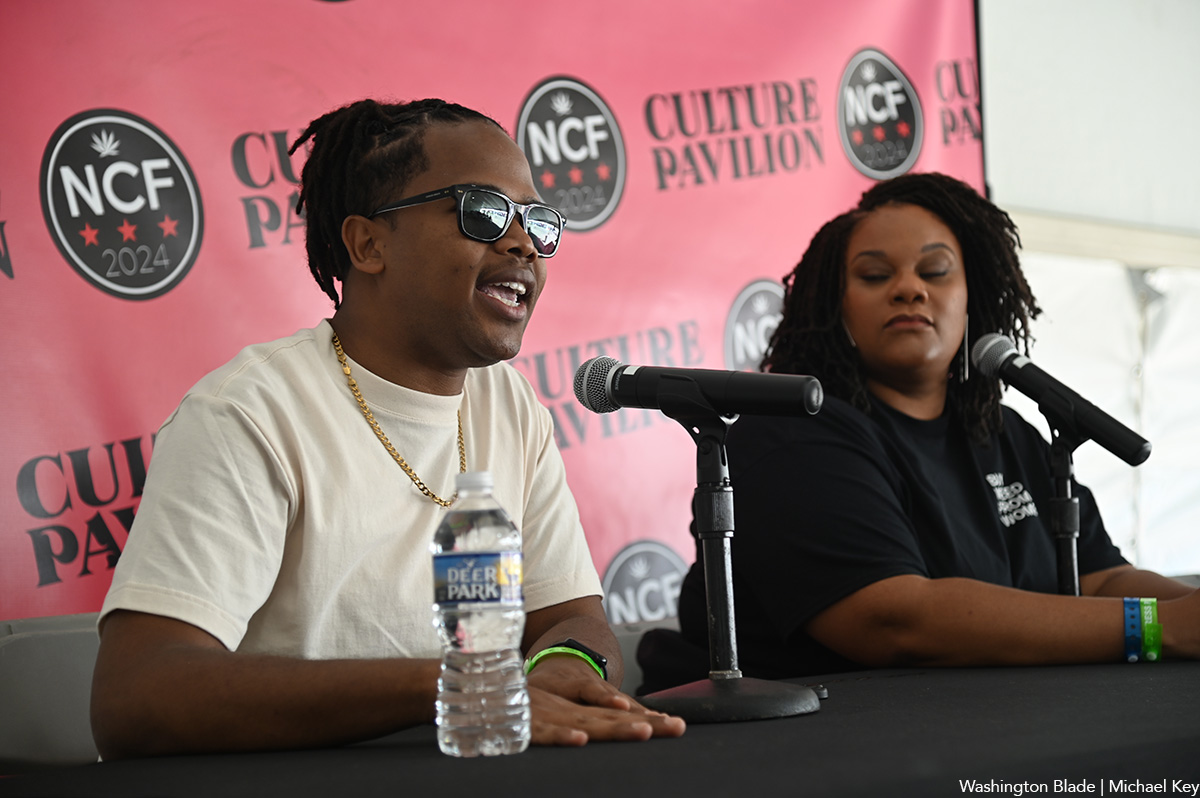
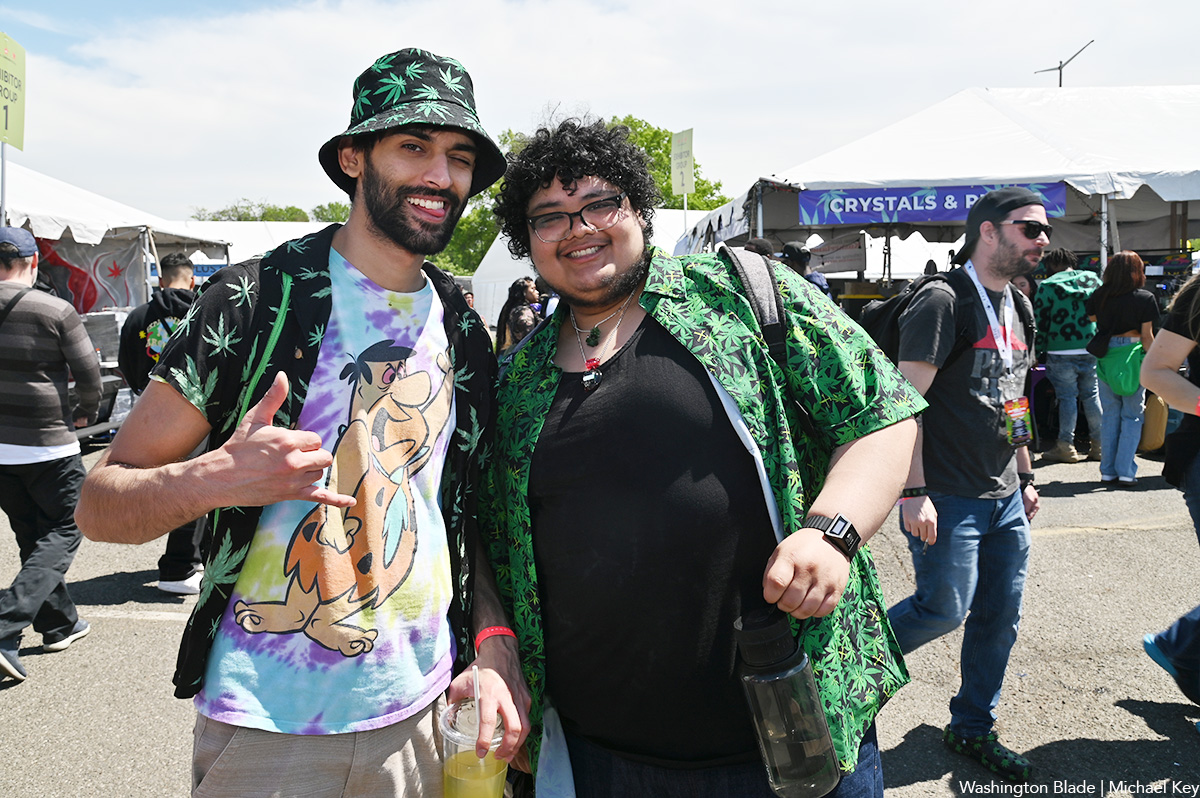

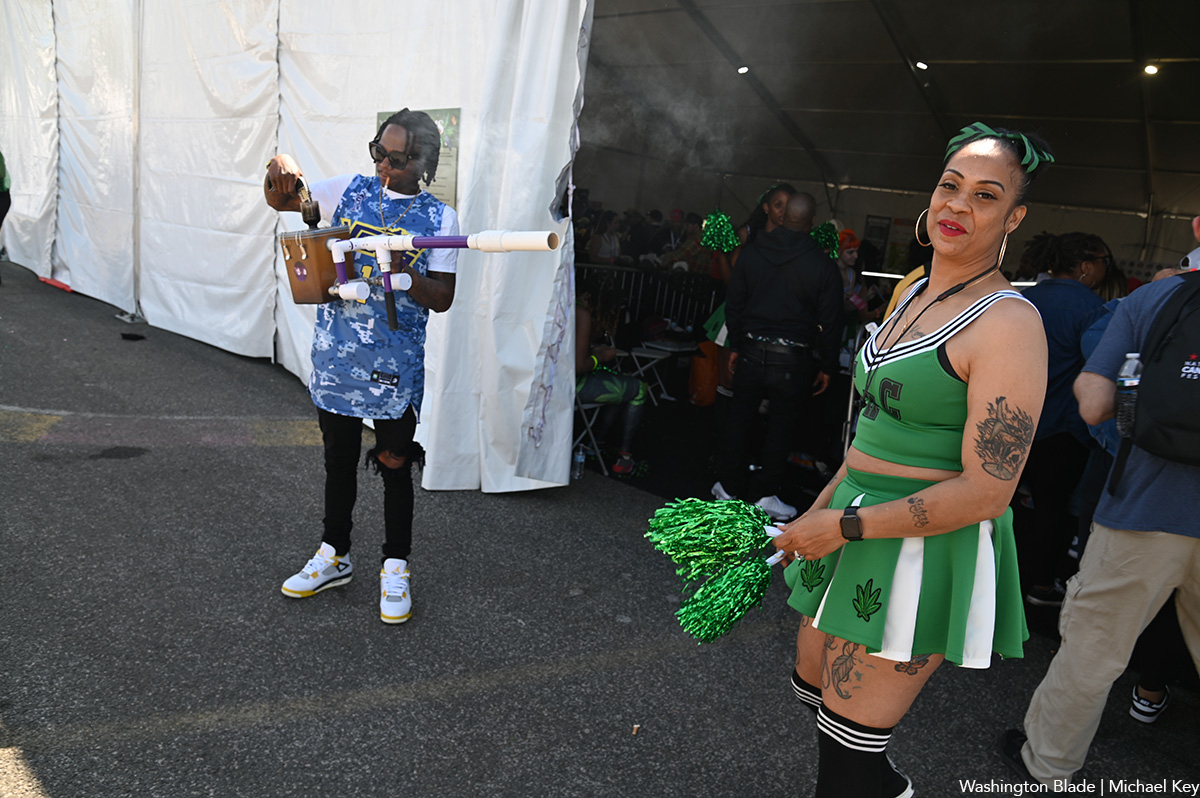

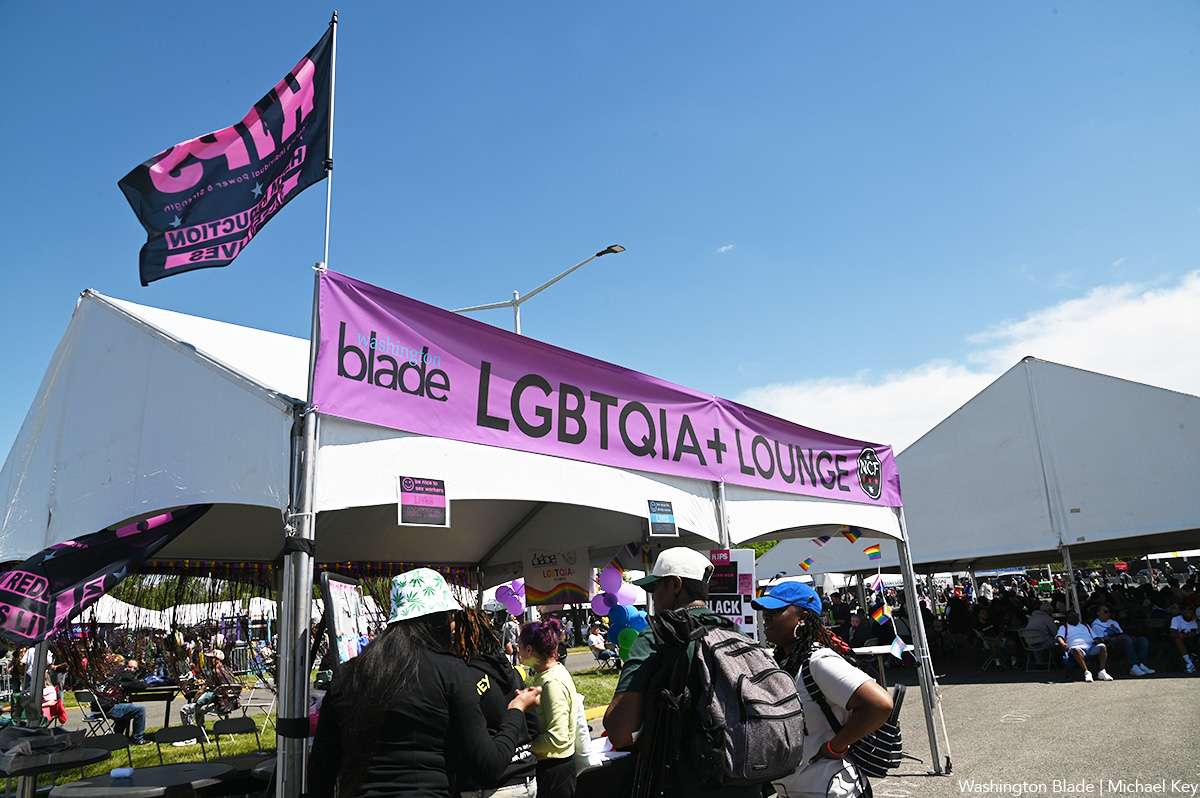
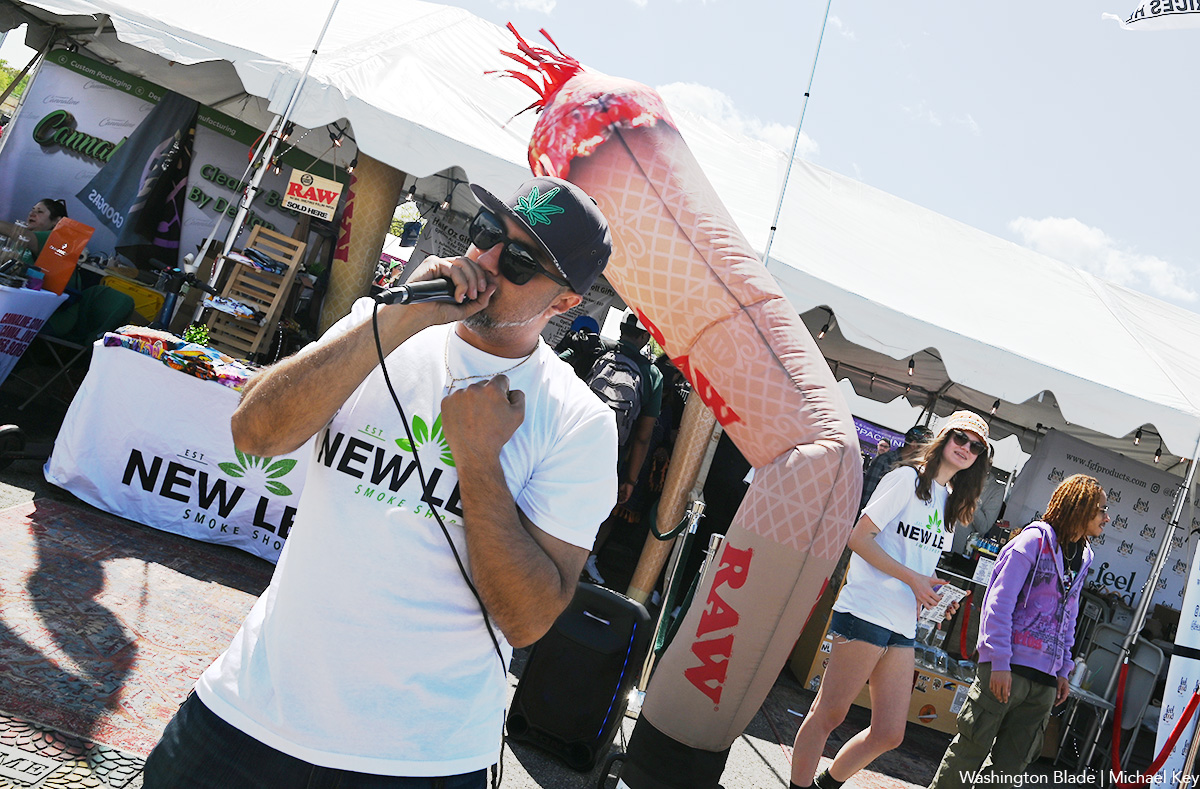
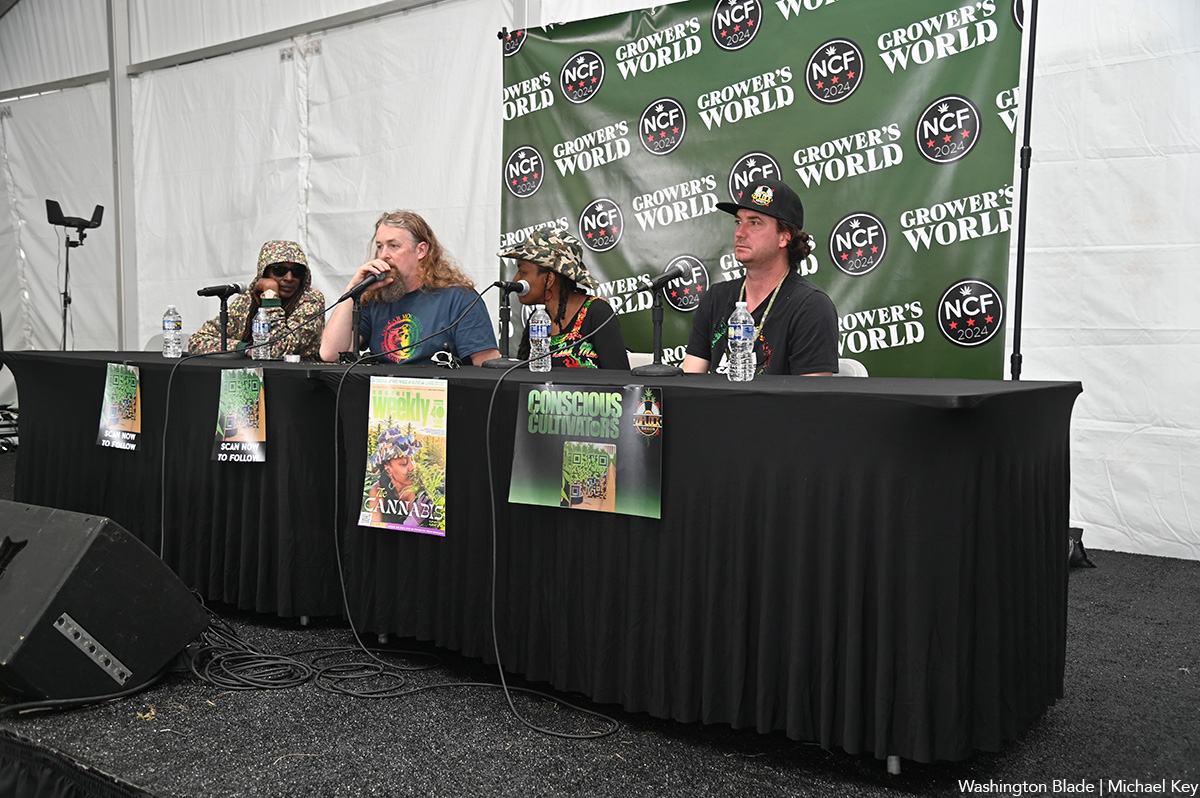
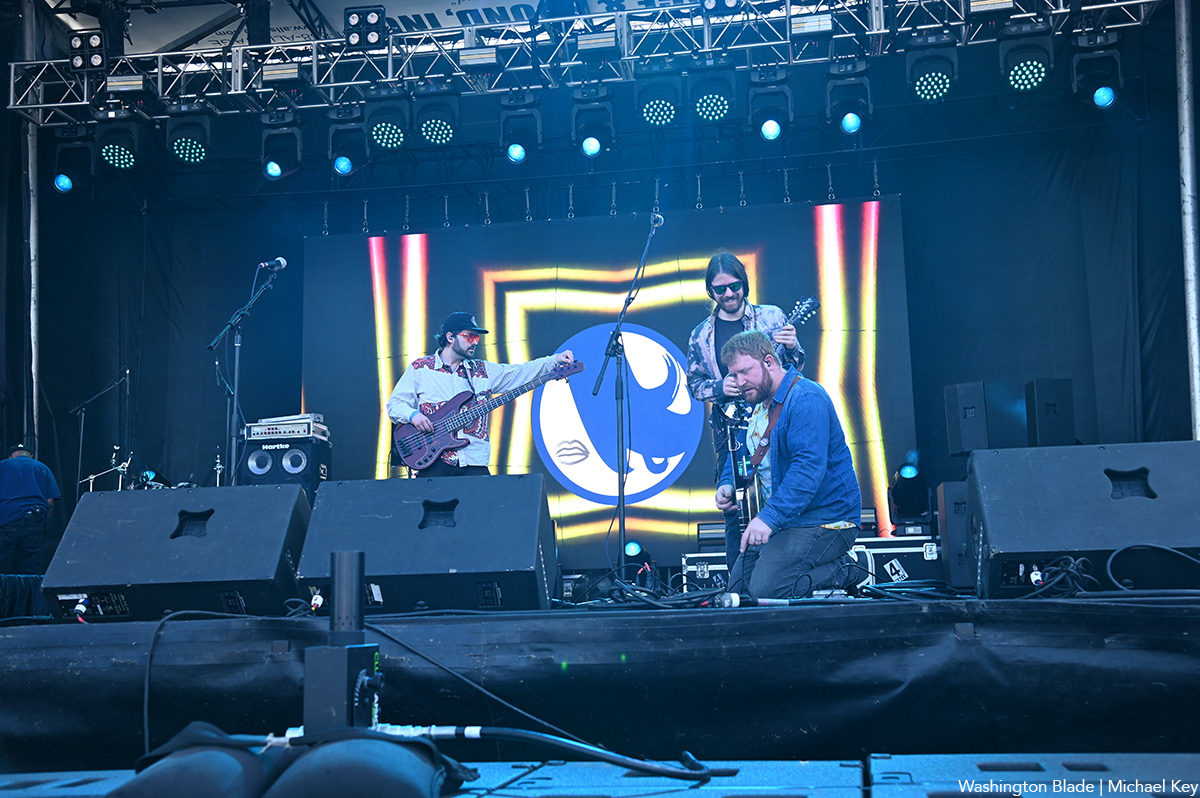
Covering the @NatlCannaFest at RFK Stadium for @WashBlade . Stop by the LGBTQ+ booth and pick up a paper if you are here. pic.twitter.com/is7hnsaPns
— Michael Patrick Key (@MichaelKeyWB) April 20, 2024
Theater
‘Amm(i)gone’ explores family, queerness, and faith
A ‘fully autobiographical’ work from out artist Adil Mansoor
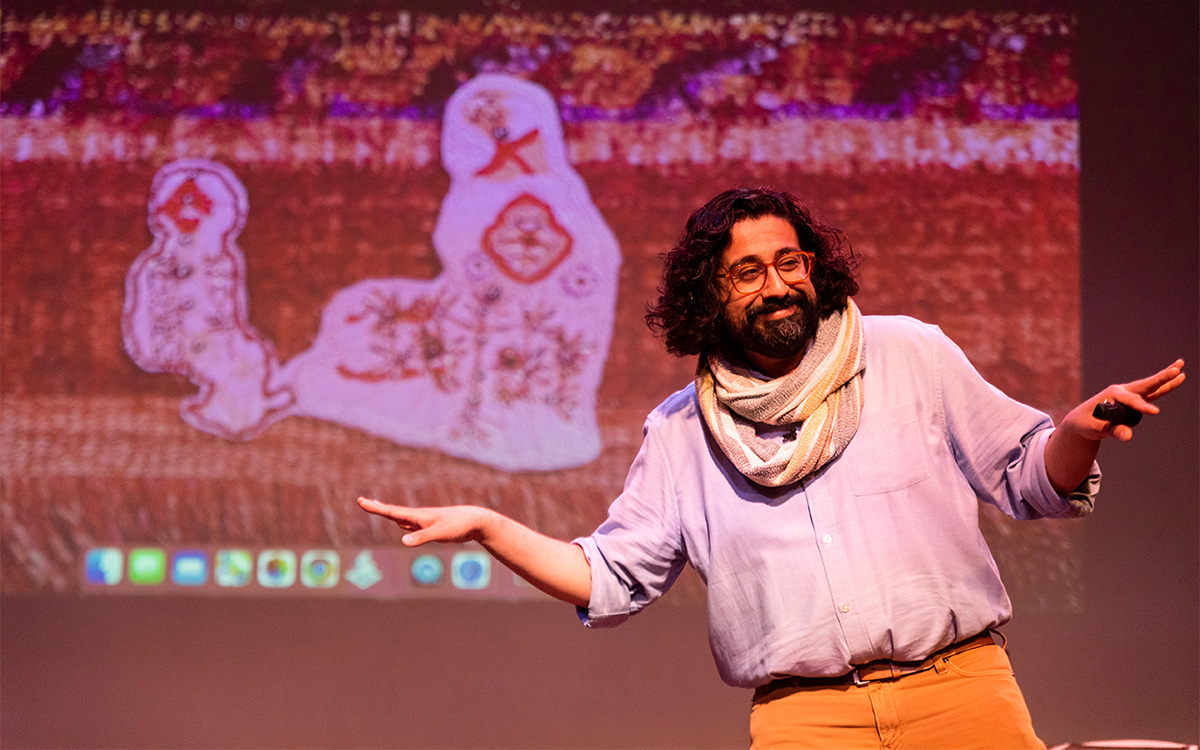
‘Amm(i)gone’
Thorough May 12
Woolly Mammoth Theatre
641 D St., N.W.
$60-$70
Woollymammoth.net
“Fully and utterly autobiographical.” That’s how Adil Mansoor describes “Amm(i)gone,” his one-man work currently playing at Woolly Mammoth Theatre.
Both created and performed by out artist Mansoor, it’s his story about inviting his Pakistani mother to translate Sophocles’s Greek tragedy “Antigone” into Urdu. Throughout the journey, there’s an exploration of family, queerness, and faith,as well as references to teachings from the Quran, and audio conversations with his Muslim mother.
Mansoor, 38, grew up in the suburbs of Chicago and is now based in Pittsburgh where he’s a busy theater maker. He’s also the founding member of Pittsburgh’s Hatch Arts Collective and the former artistic director of Dreams of Hope, an LGBTQ youth arts organization.
WASHINGTON BLADE: What spurred you to create “Amm(i)gone”?
ADIL MANSOOR: I was reading a translation of “Antigone” a few years back and found myself emotionally overwhelmed. A Theban princess buries her brother knowing it will cost her, her own life. It’s about a person for whom all aspirations are in the afterlife. And what does that do to the living when all of your hopes and dreams have to be reserved for the afterlife?
I found grant funding to pay my mom to do the translation. I wanted to engage in learning. I wanted to share theater but especially this ancient tragedy. My mother appreciated the characters were struggling between loving one another and their beliefs.
BLADE: Are you more director than actor?
MANSOOR: I’m primarily a director with an MFA in directing from Carnegie Mellon. I wrote, directed, and performed in this show, and had been working on it for four years. I’ve done different versions including Zoom. Woolly’s is a new production with the same team who’ve been involved since the beginning.
I love solo performance. I’ve produced and now teach solo performance and believe in its power. And I definitely lean toward “performance” and I haven’t “acted” since I was in college. I feel good on stage. I was a tour guide and do a lot of public speaking. I enjoy the attention.
BLADE: Describe your mom.
MANSOOR: My mom is a wonderfully devout Muslim, single mother, social worker who discovered my queerness on Google. And she prays for me.
She and I are similar, the way we look at things, the way we laugh. But different too. And those are among the questions I ask in this show. Our relationship is both beautiful and complicated.
BLADE: So, you weren’t exactly hiding your sexuality?
MANSOOR: In my mid-20s, I took time to talk with friends about our being queer with relation to our careers. My sexuality is essential to the work. As the artistic director at Dreams of Hope, part of the work was to model what it means to be public. If I’m in a room with queer and trans teenagers, part of what I’m doing is modeling queer adulthood. The way they see me in the world is part of what I’m putting out there. And I want that to be expansive and full.
So much of my work involves fundraising and being a face in schools. Being out is about making safe space for queer young folks.
BLADE: Have you encountered much Islamophobia?
MANSOOR: When 9/11 happened, I was a sophomore in high school, so yes. I faced a lot then and now. I’ve been egged on the street in the last four months. I see it in the classroom. It shows up in all sorts of ways.
BLADE: What prompted you to lead your creative life in Pittsburgh?
MANSOOR: I’ve been here for 14 years. I breathe with ease in Pittsburgh. The hills and the valleys and the rust of the city do something to me. It’s beautiful, it’ affordable, and there is support for local artists. There’s a lot of opportunity.
Still, the plan was to move to New York in September of 2020 but that was cancelled. Then the pandemic showed me that I could live in Pittsburgh and still have a nationally viable career.
BLADE: What are you trying to achieve with “Amm(i)gone”?
MANSOOR: What I’m sharing in the show is so very specific but I hear people from other backgrounds say I totally see my mom in that. My partner is Catholic and we share so much in relation to this.
I hope the work is embracing the fullness of queerness and how means so many things. And I hope the show makes audiences want to call their parents or squeeze their partners.


